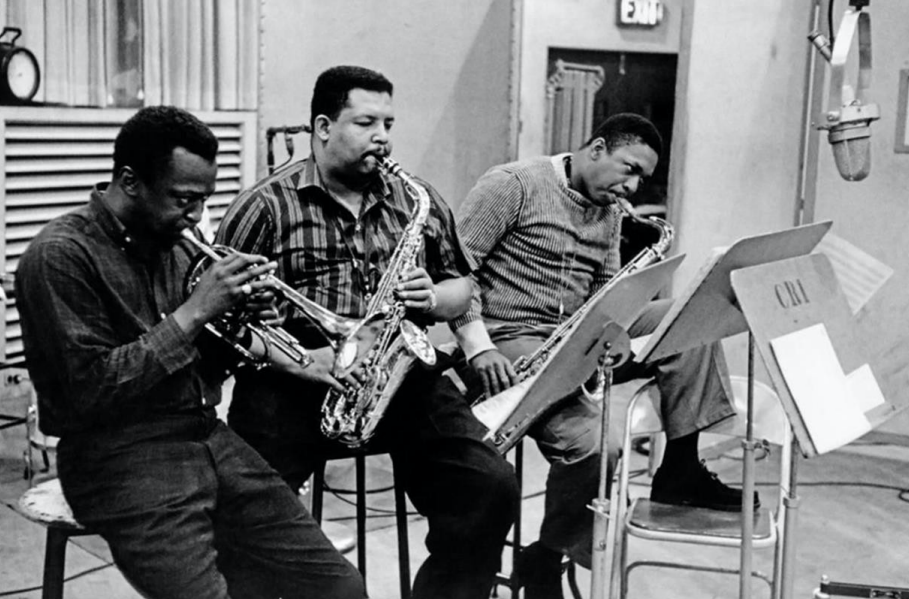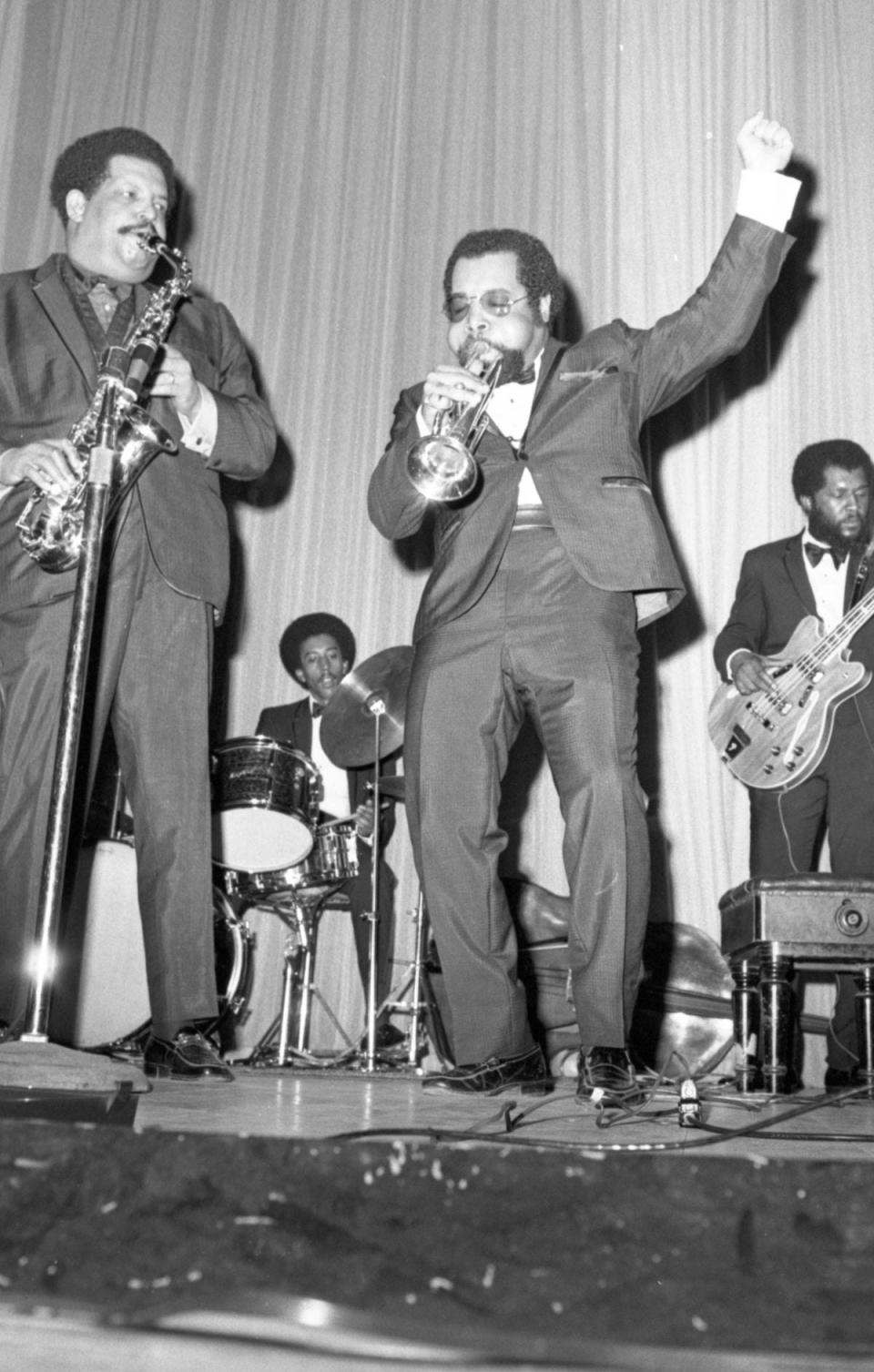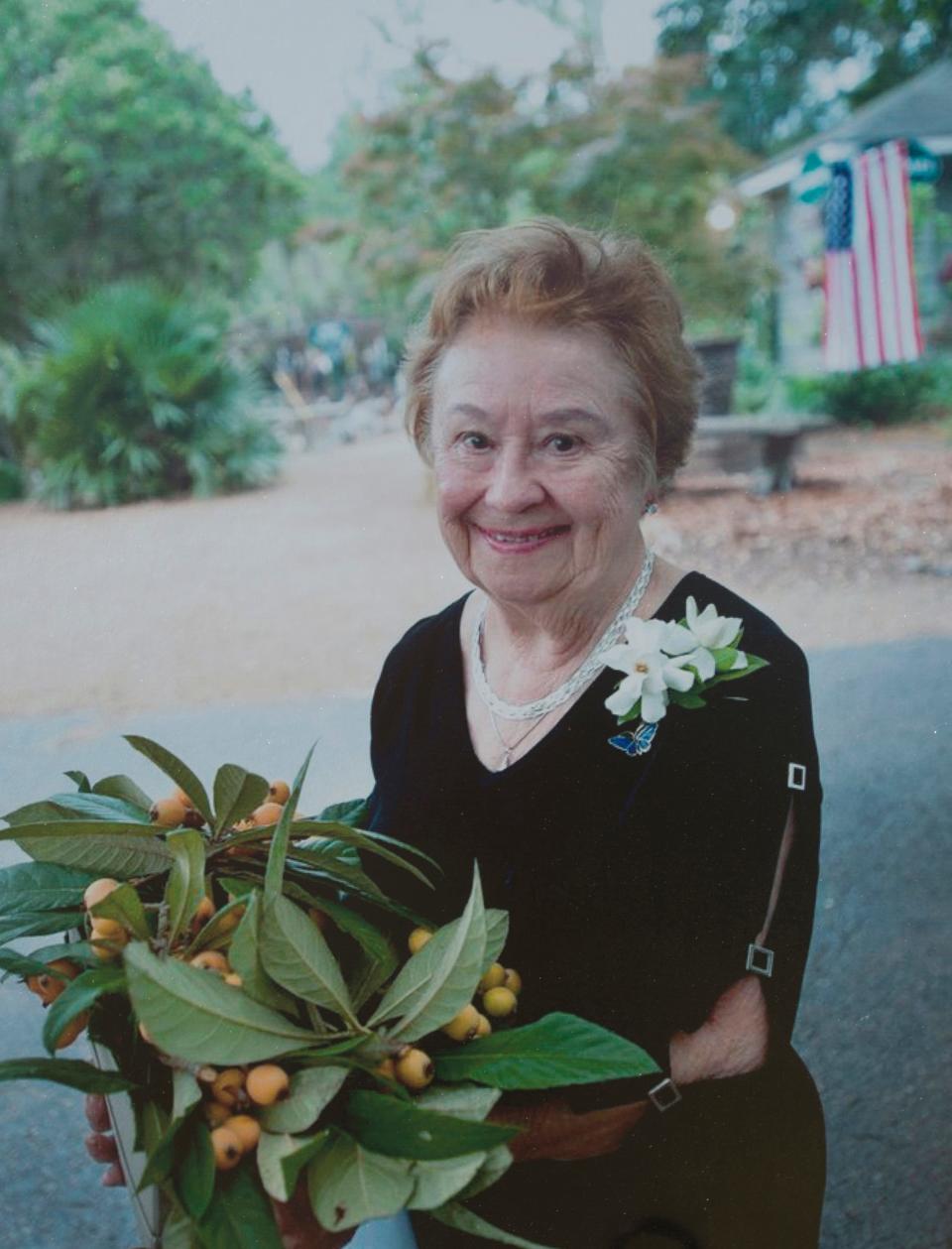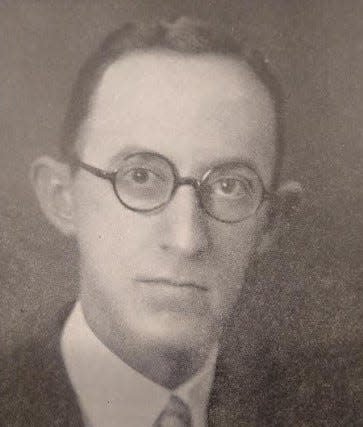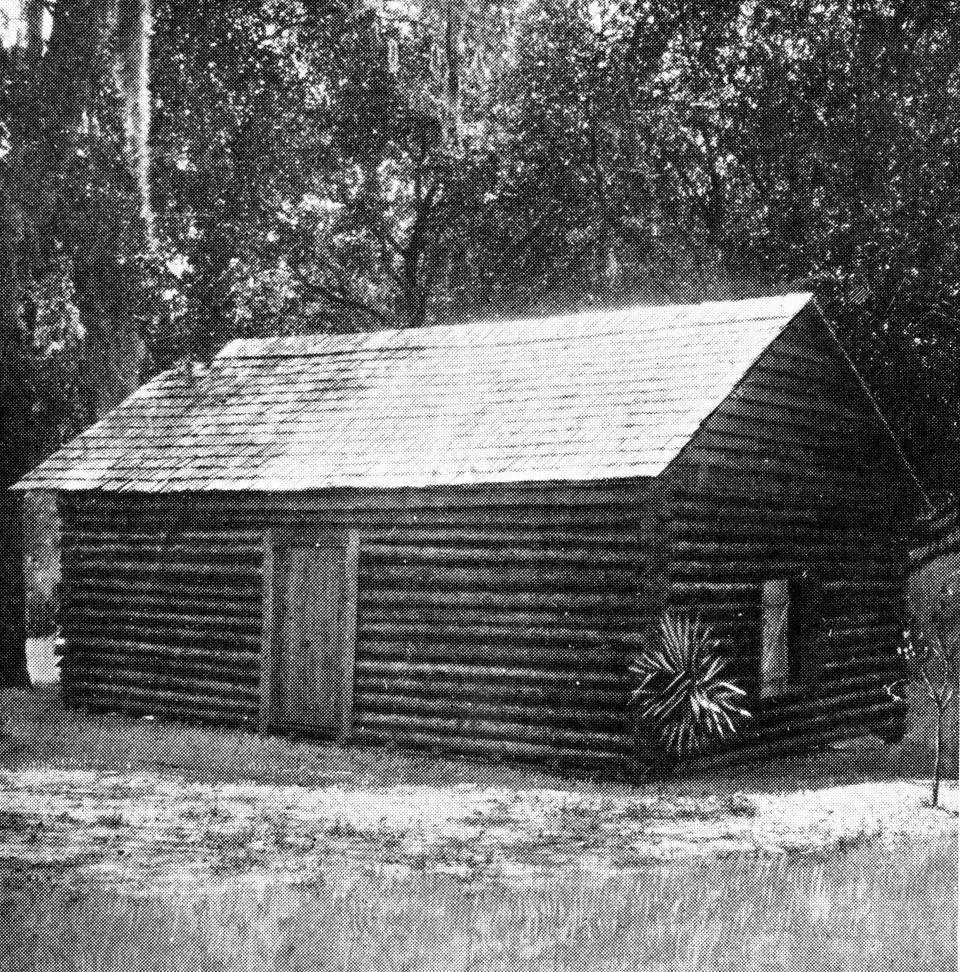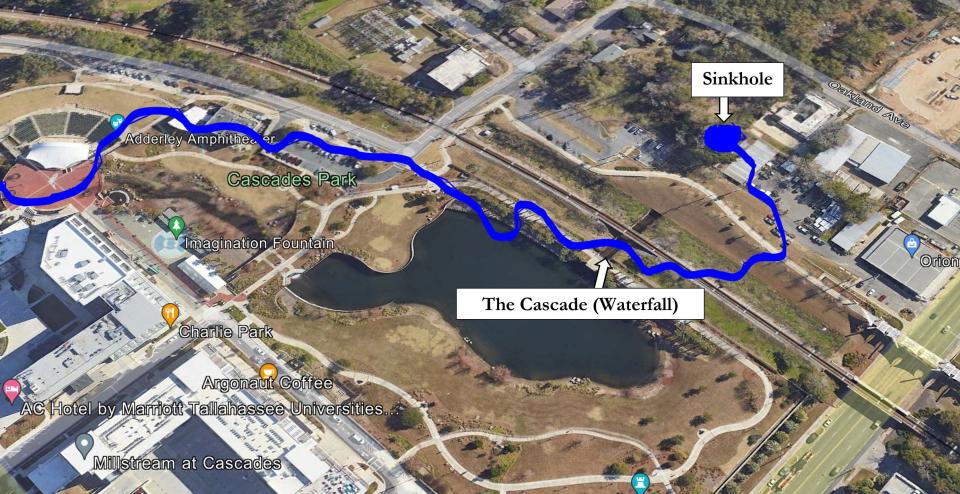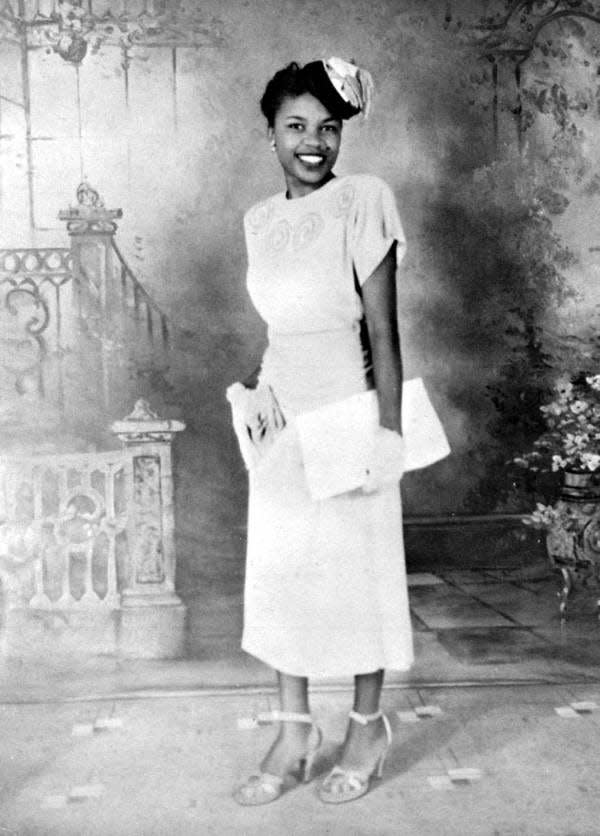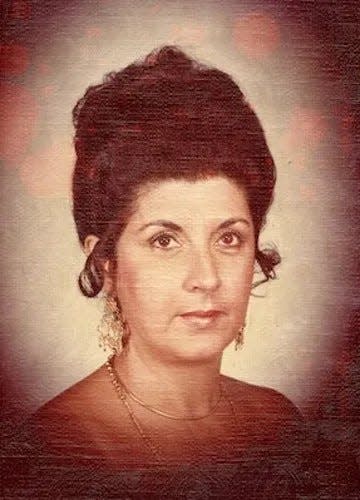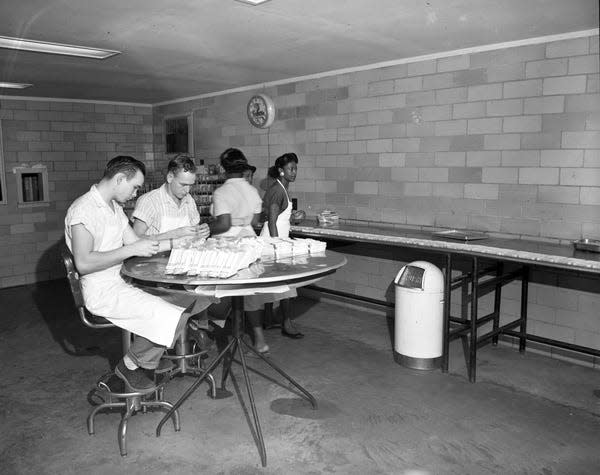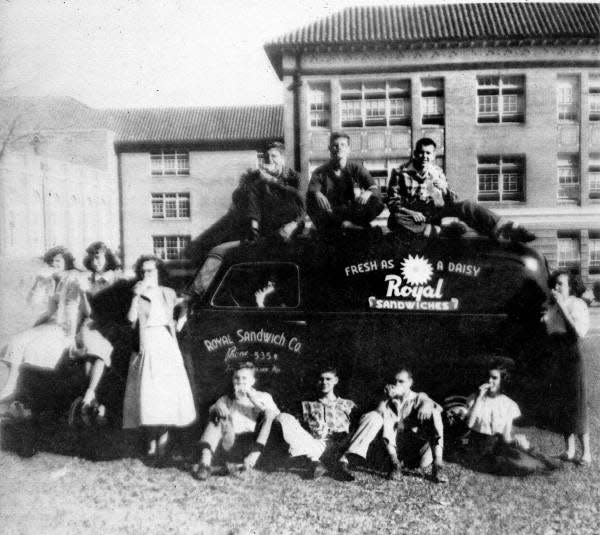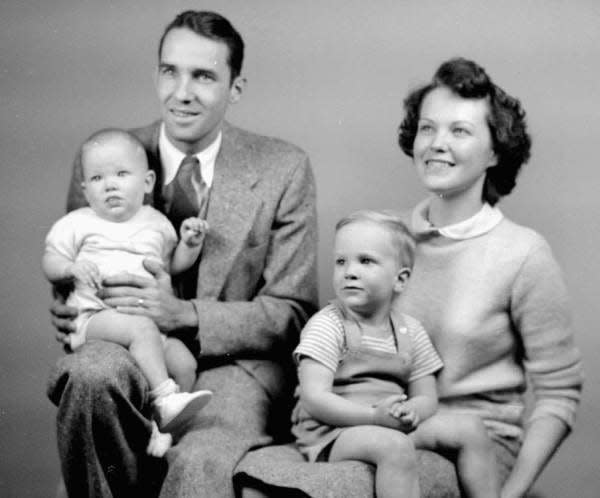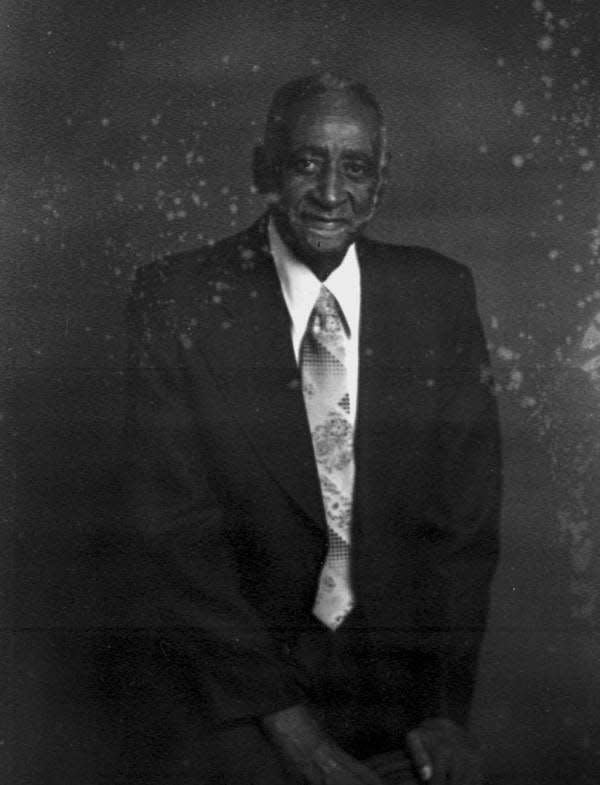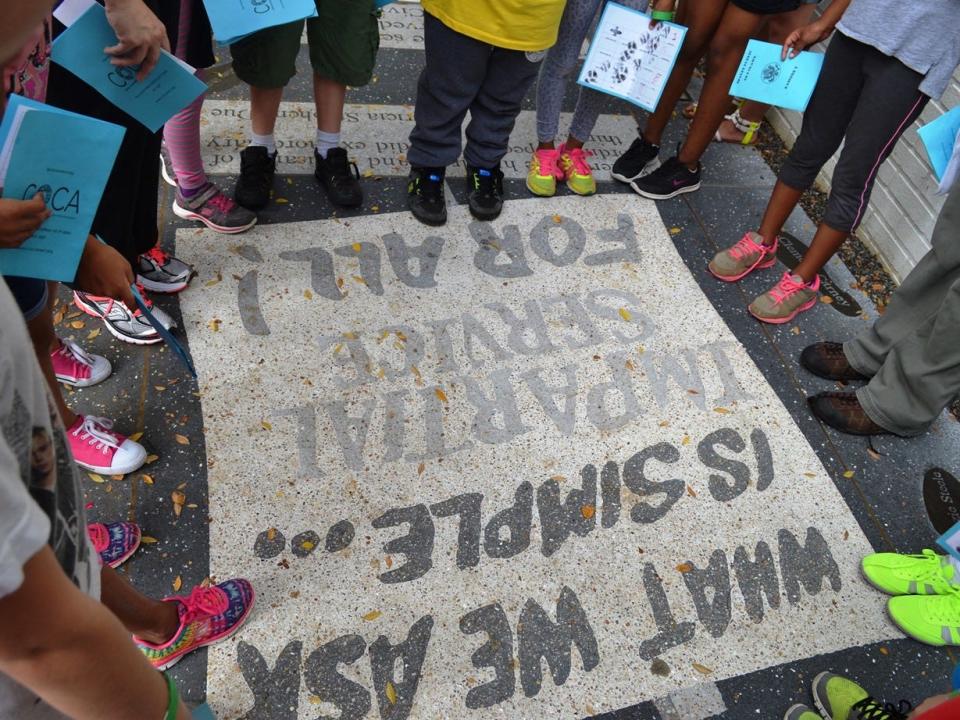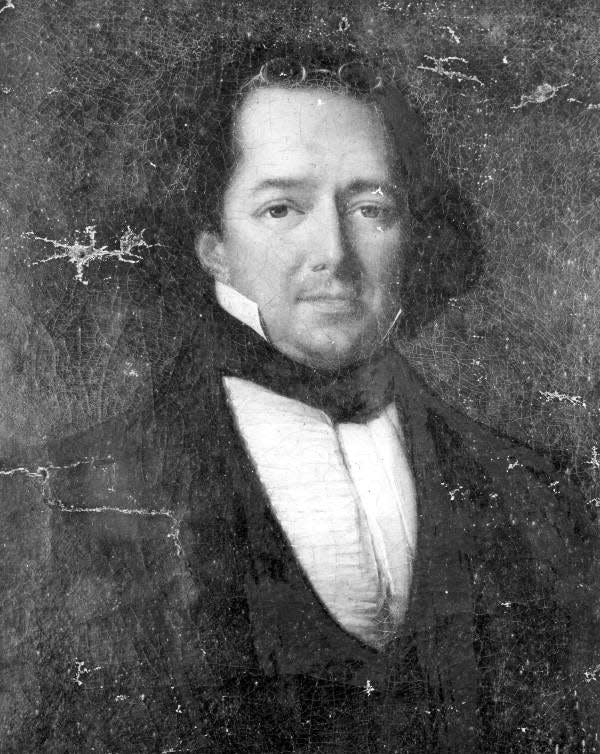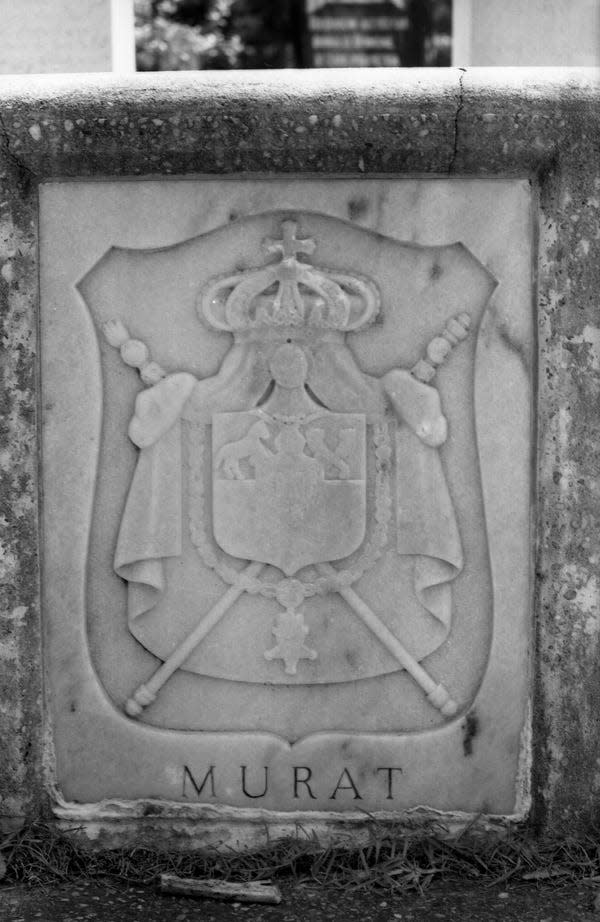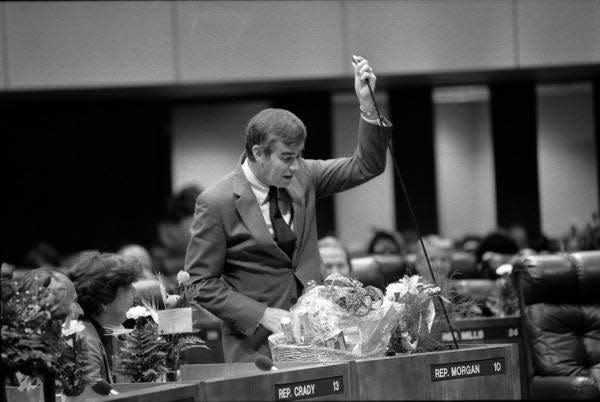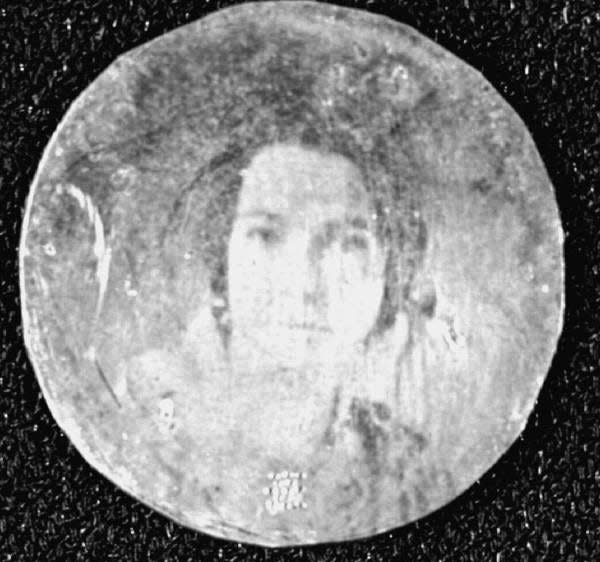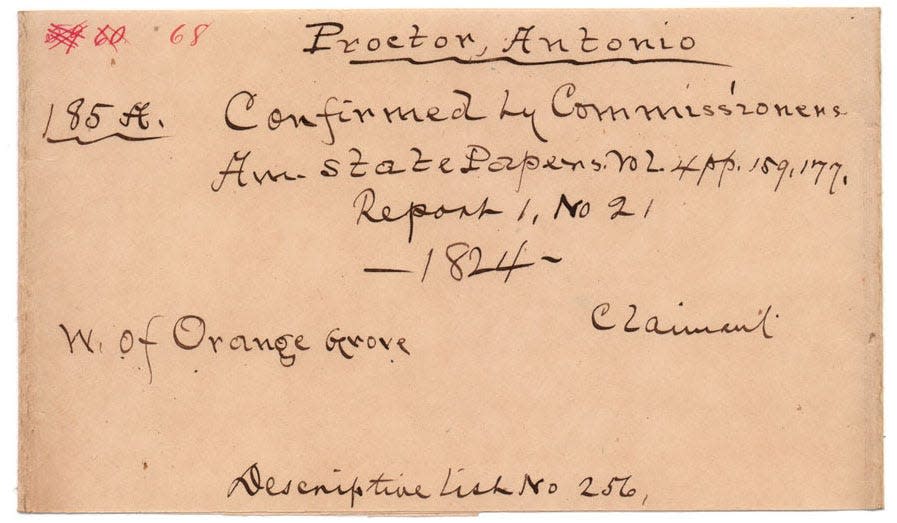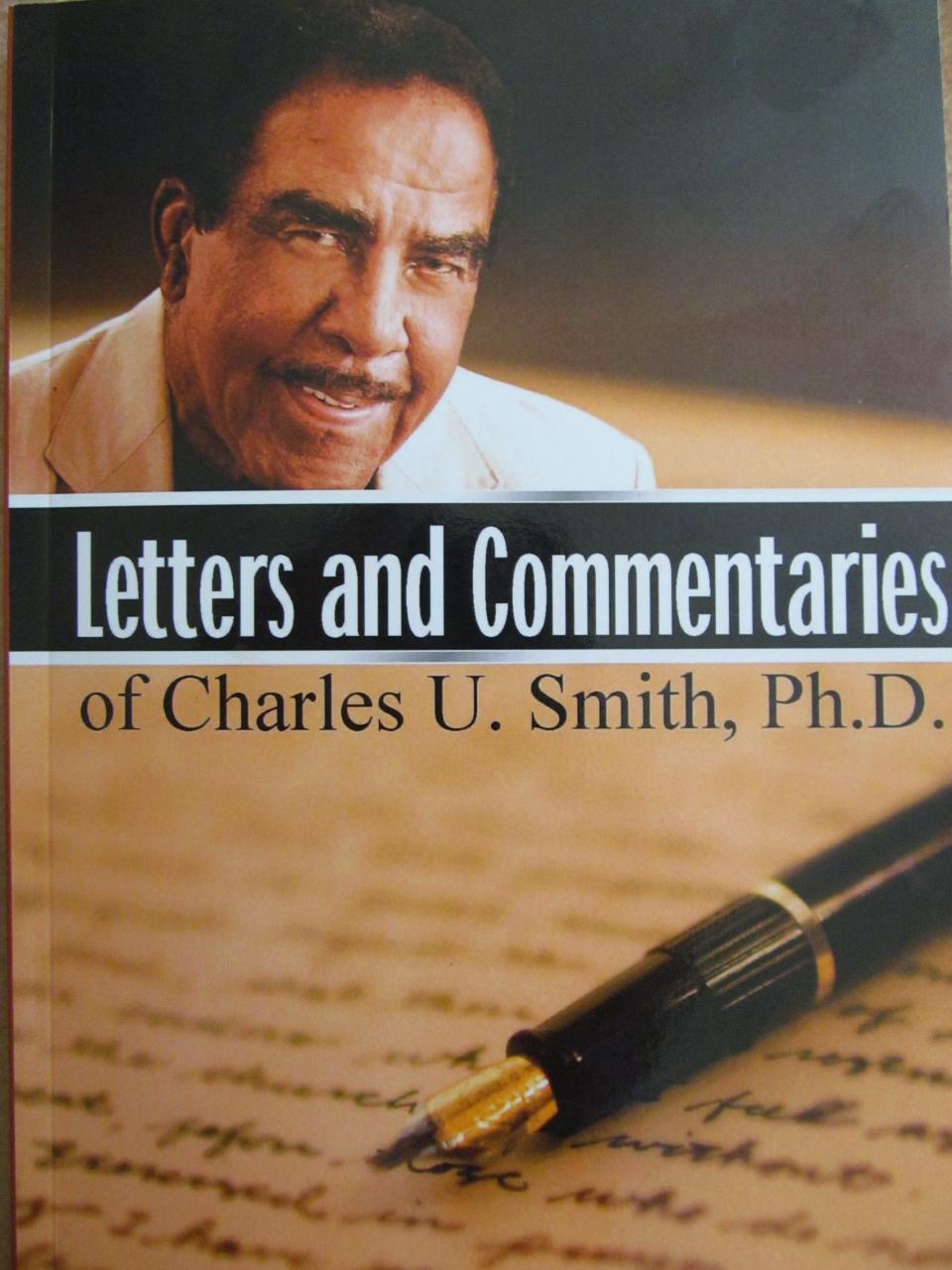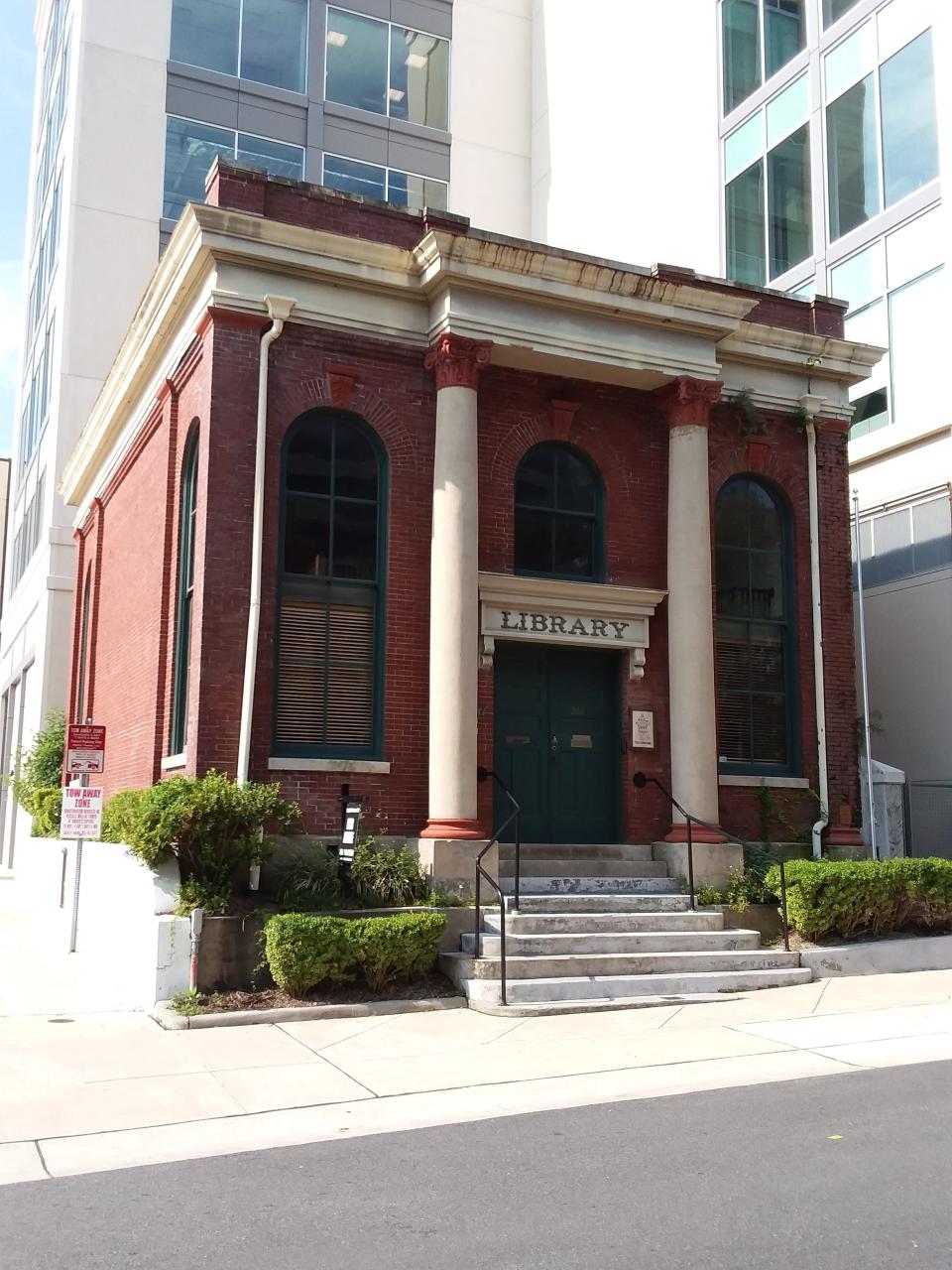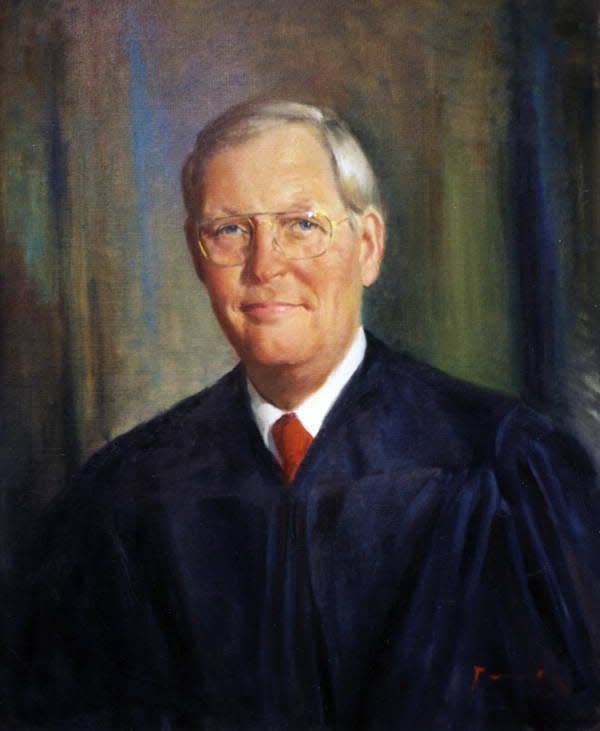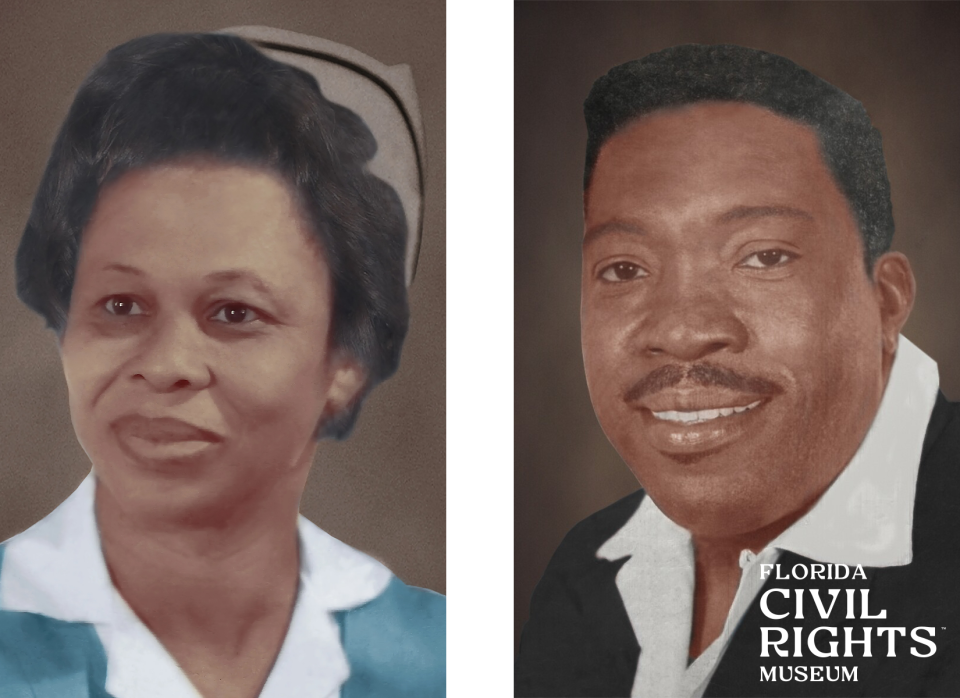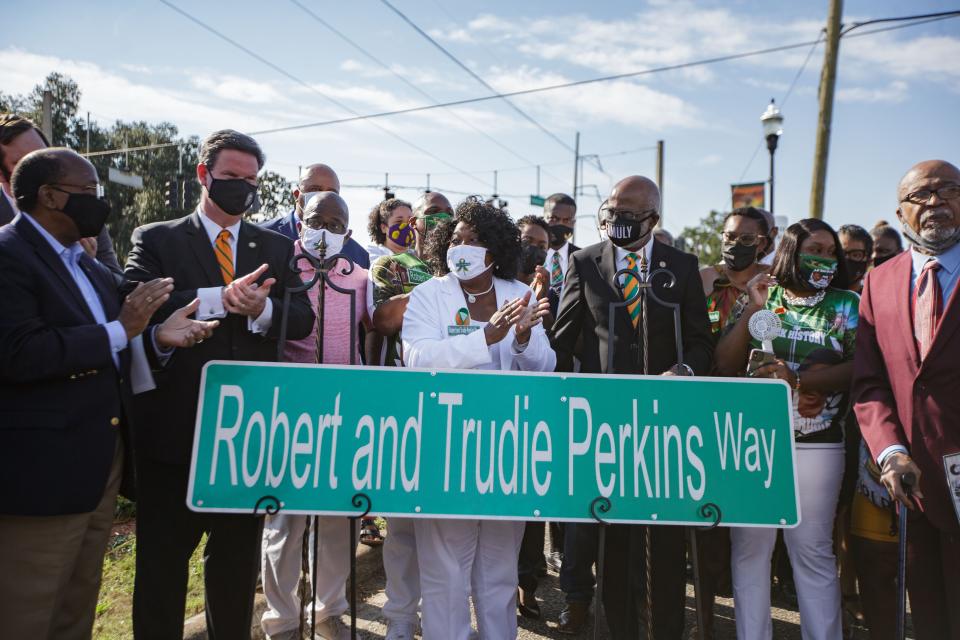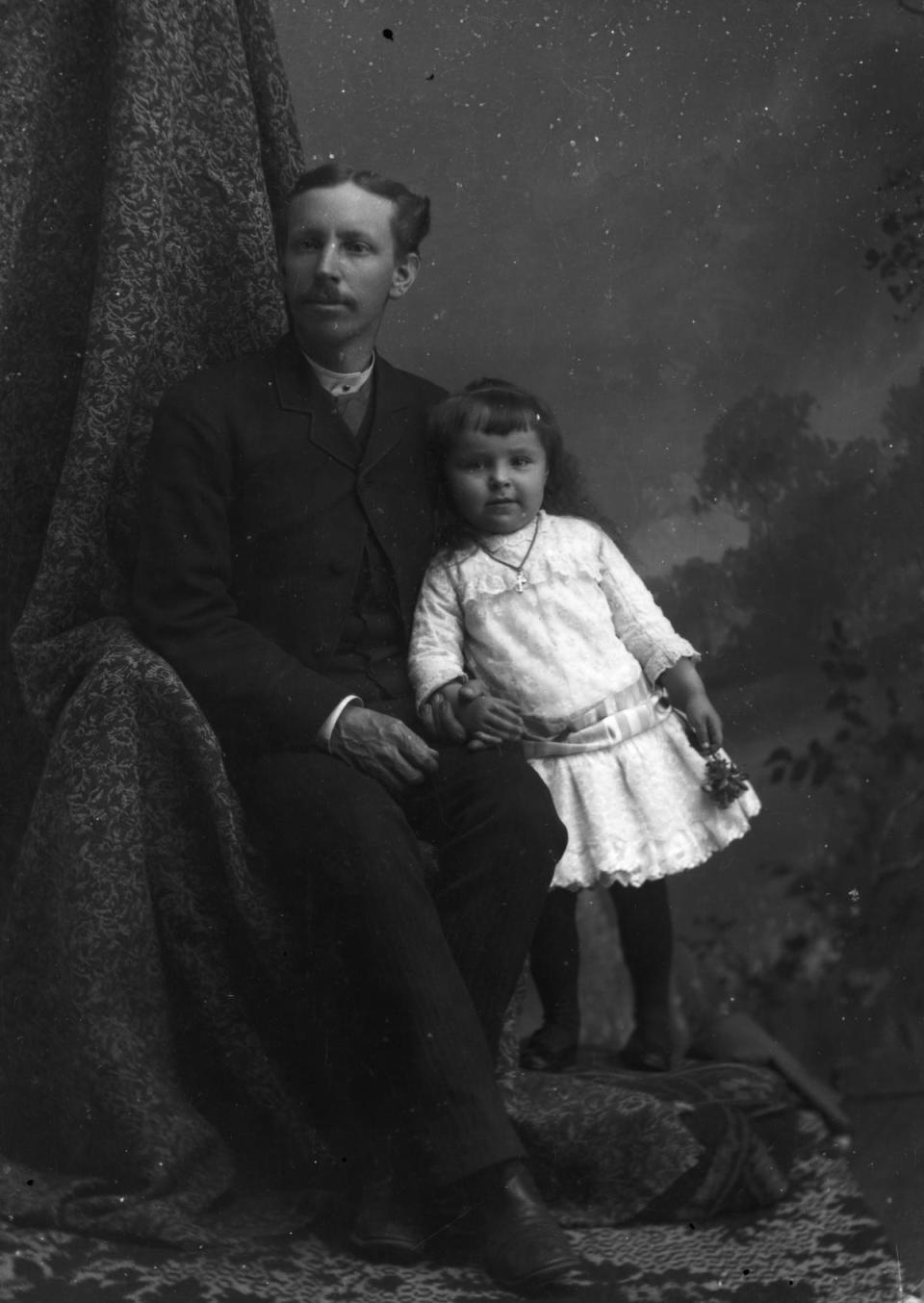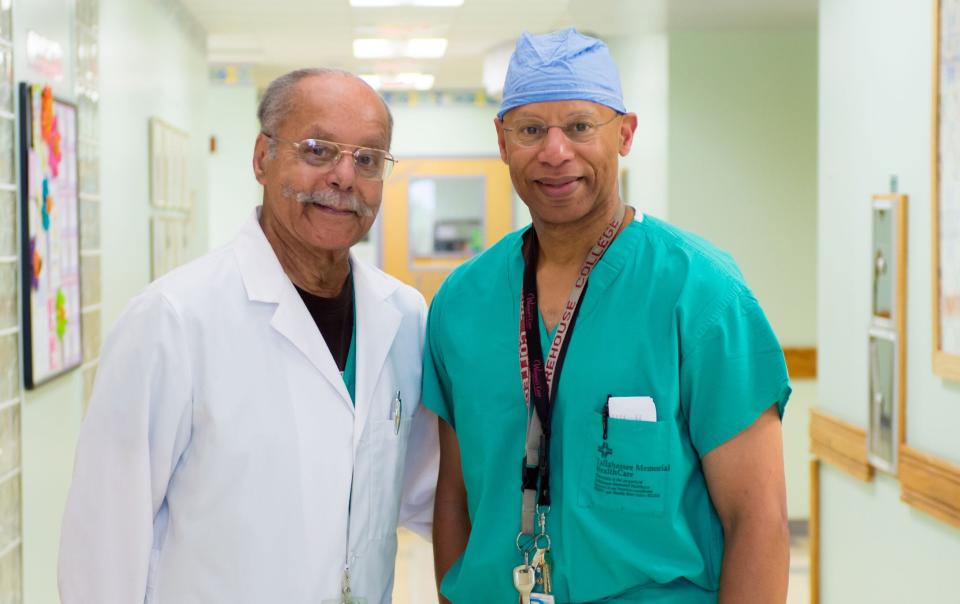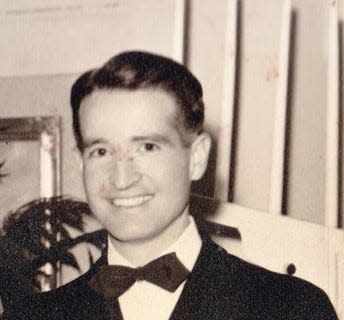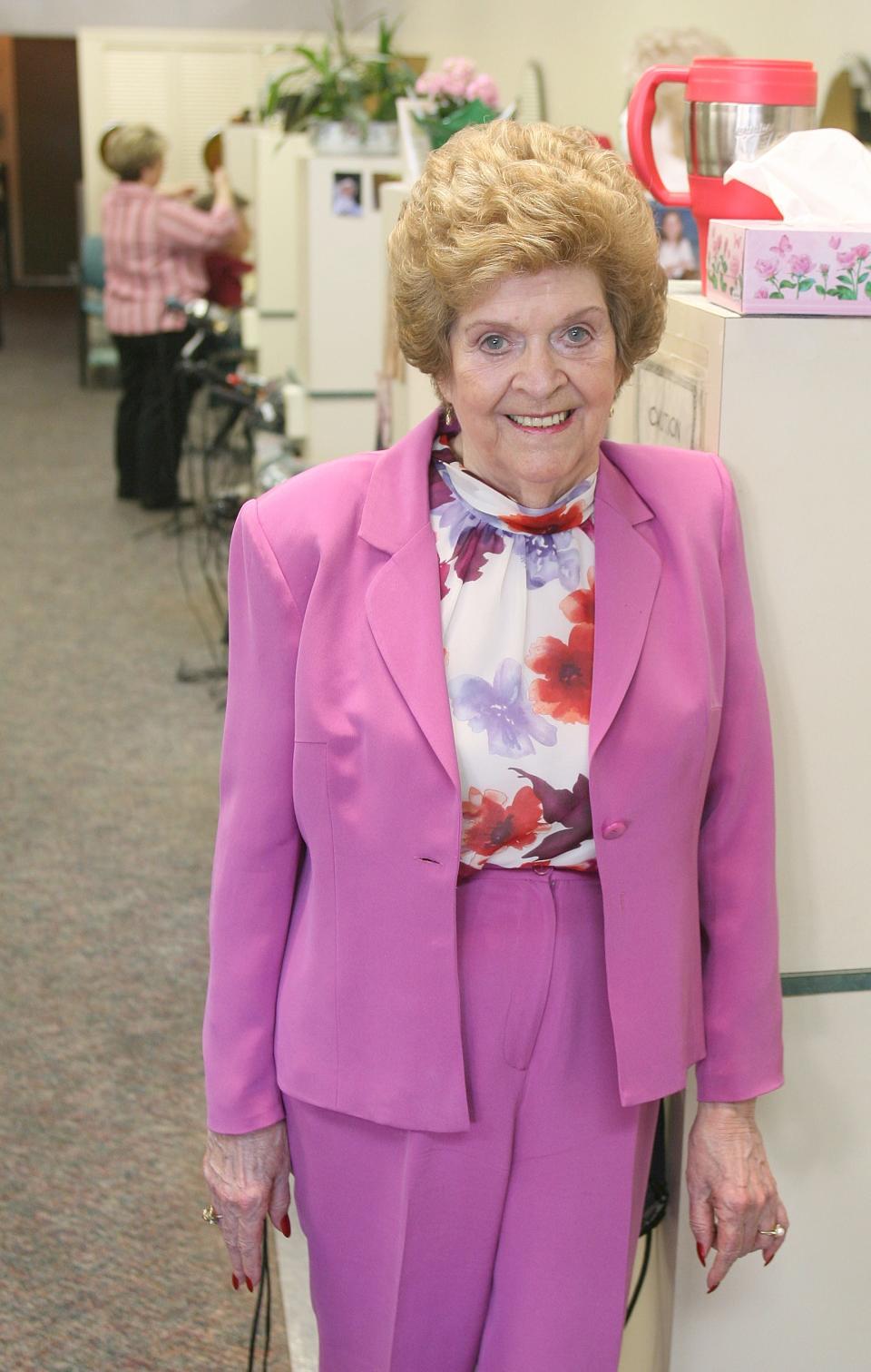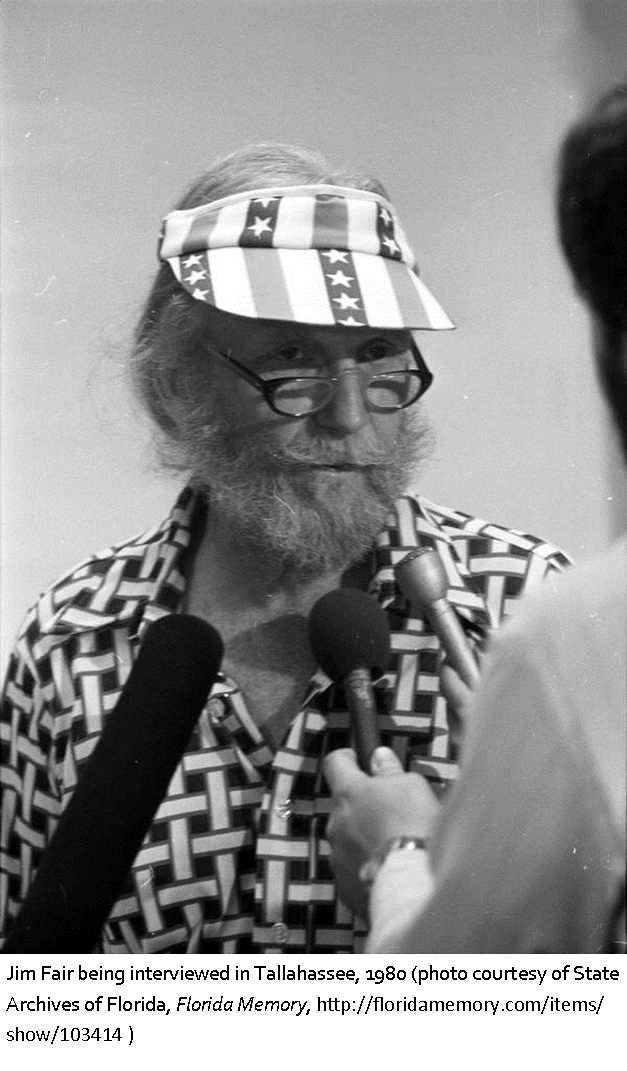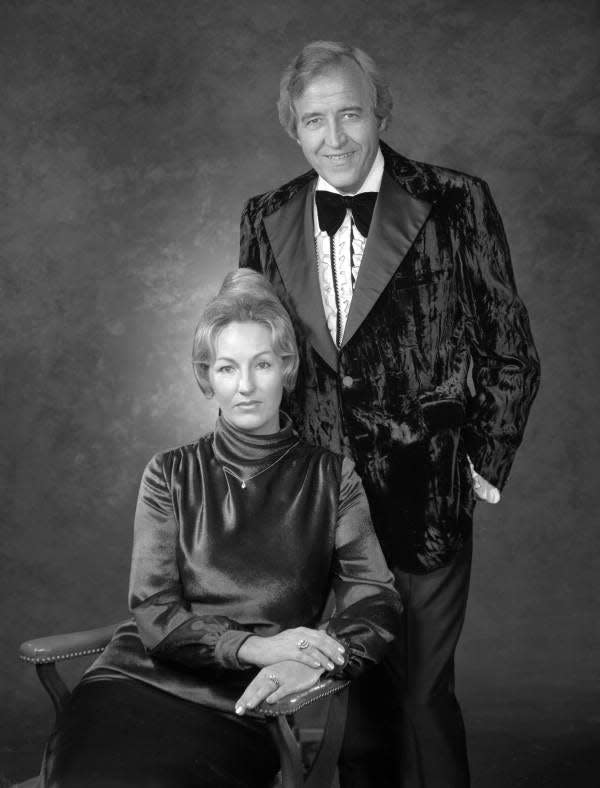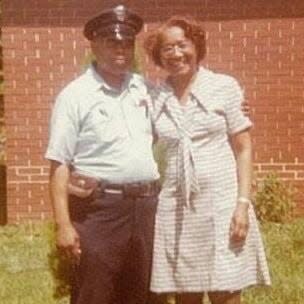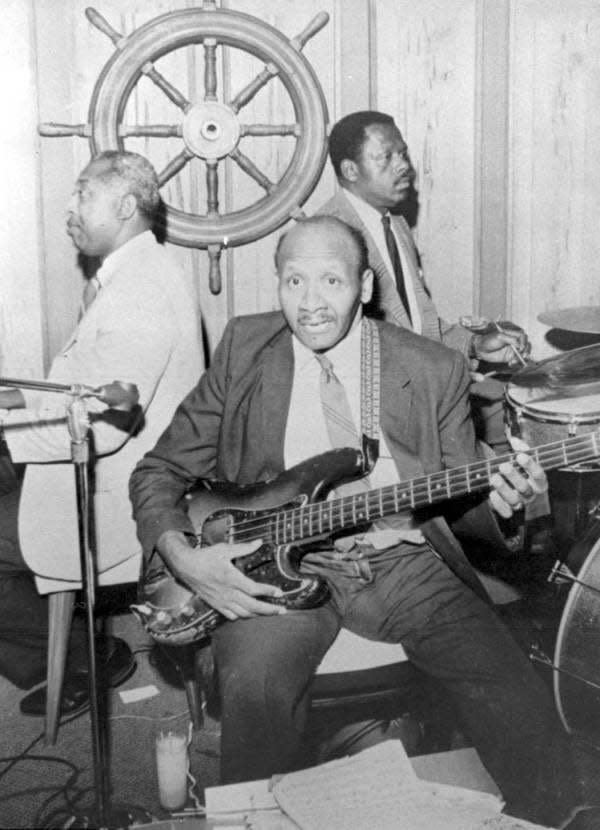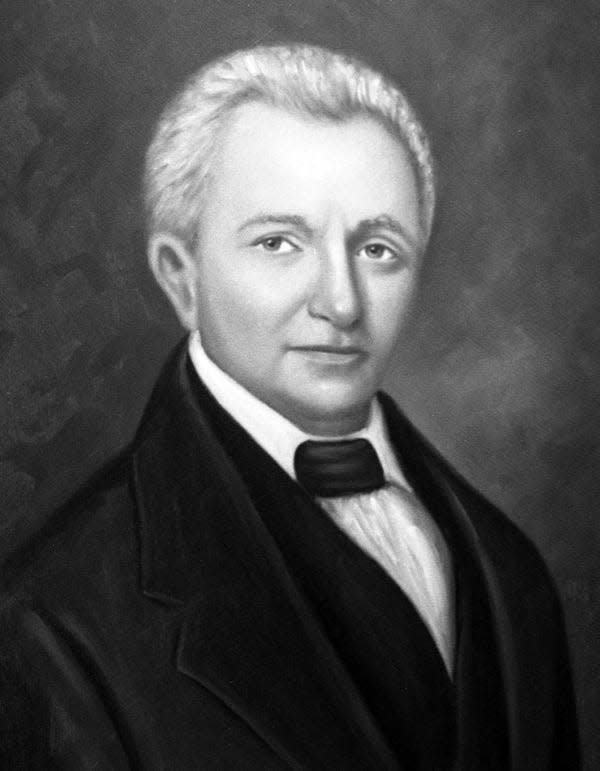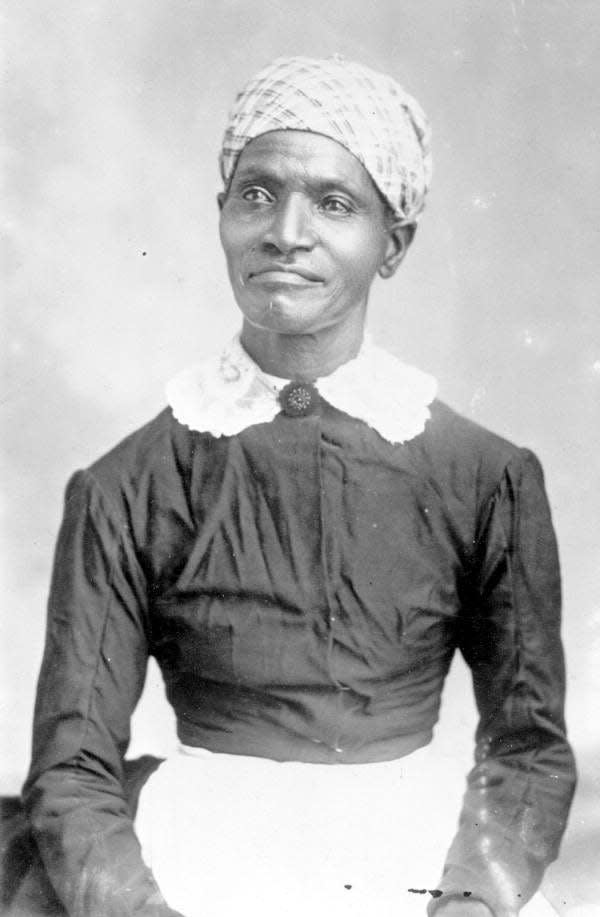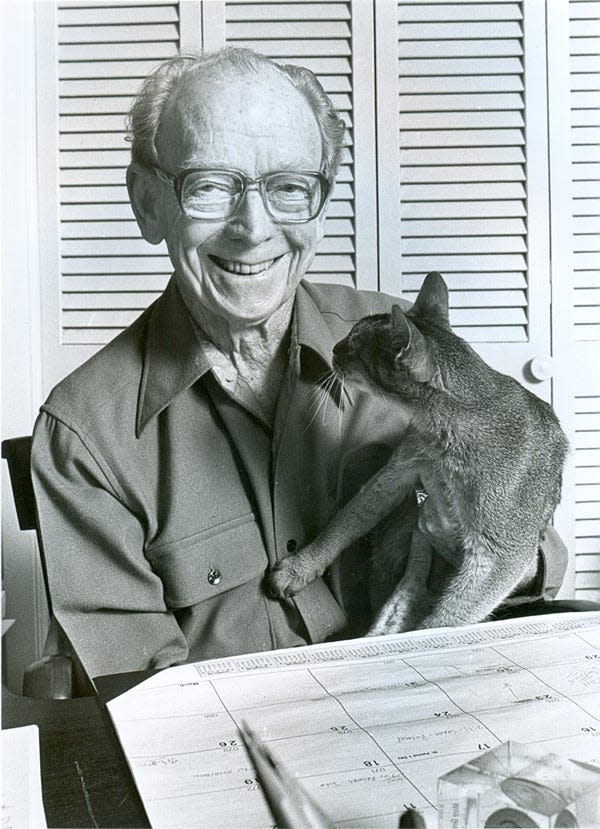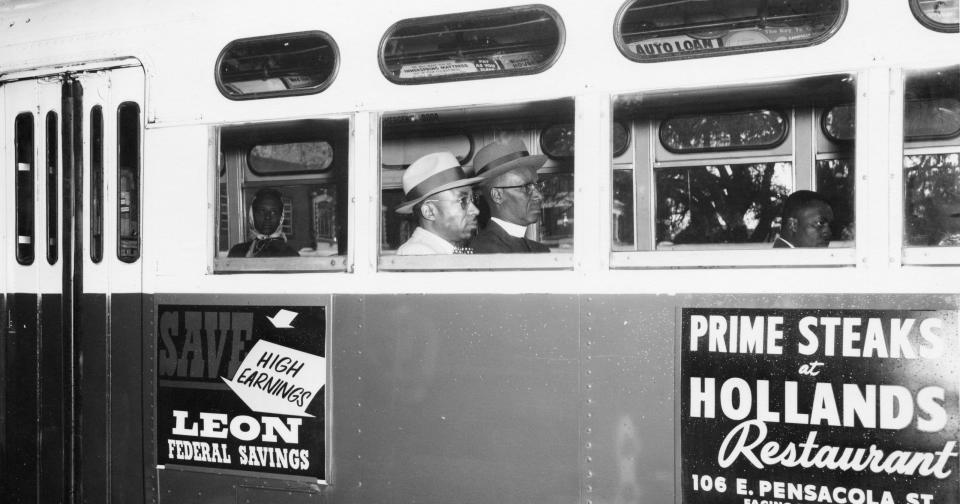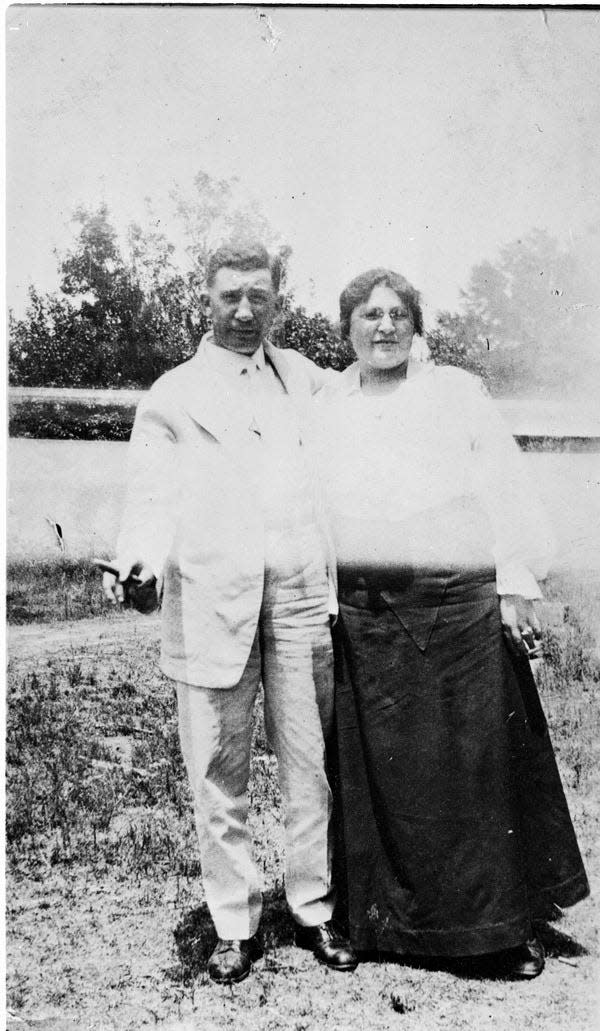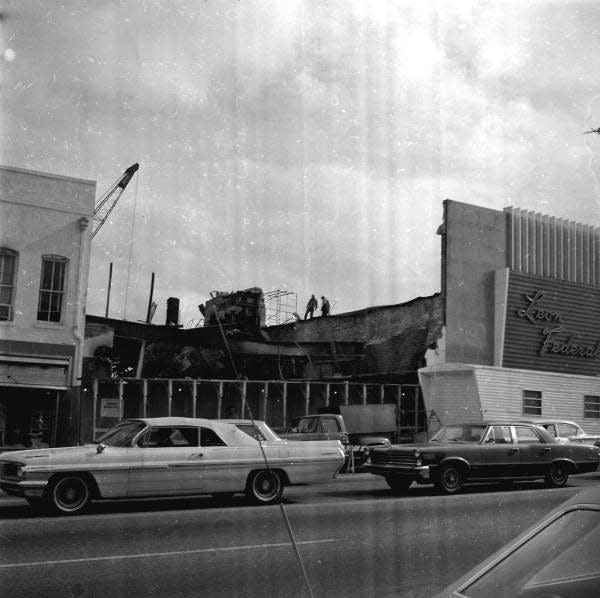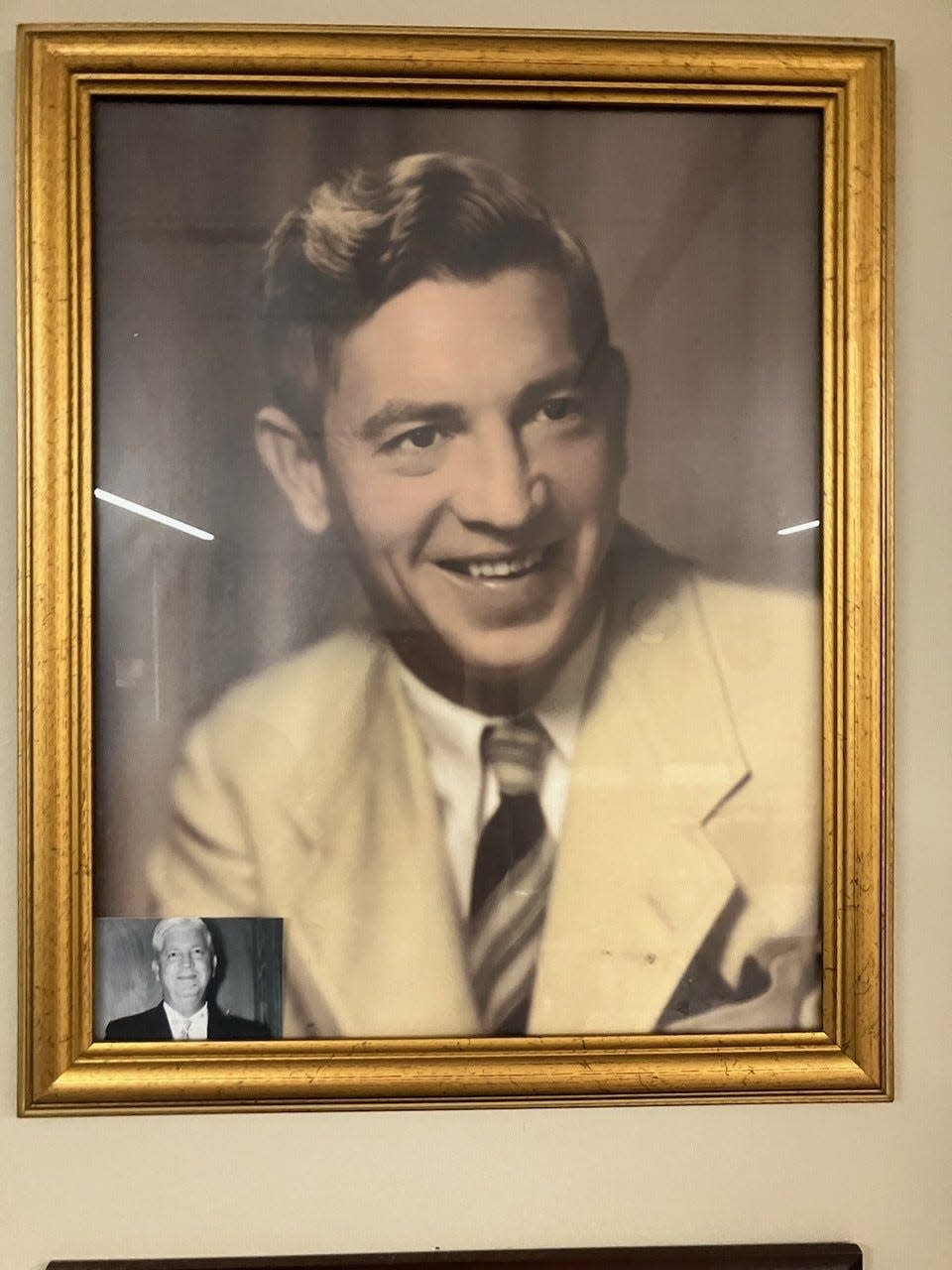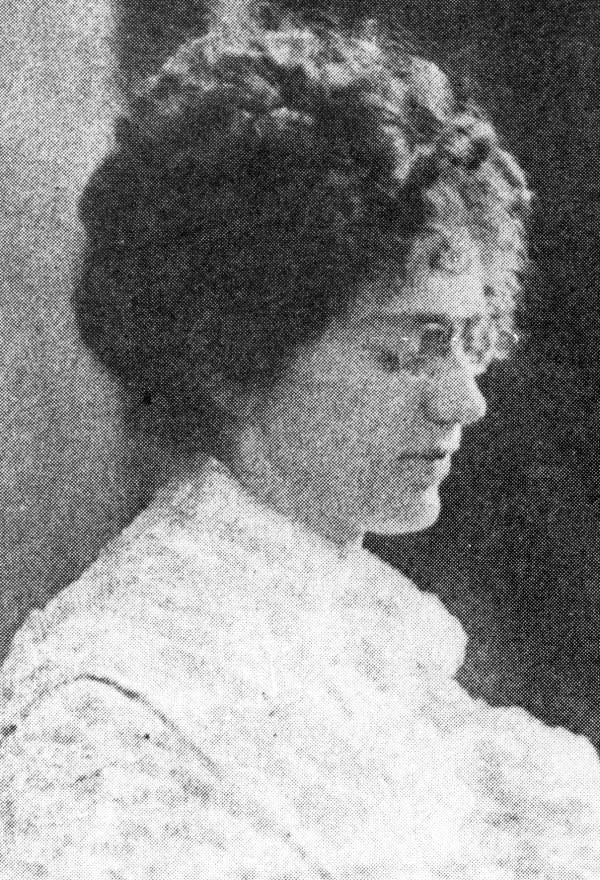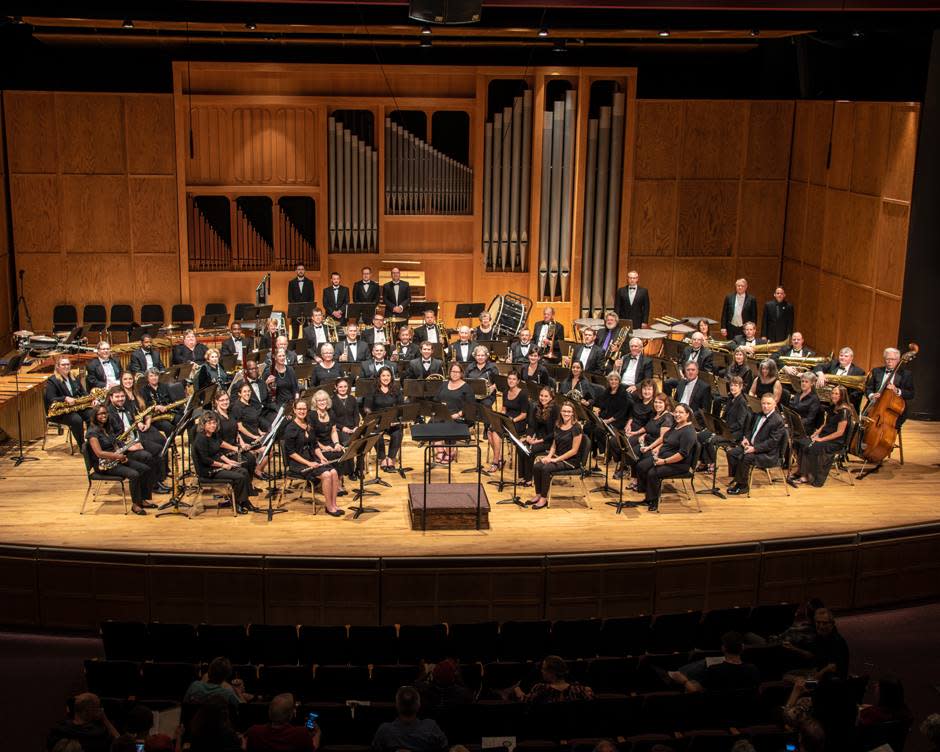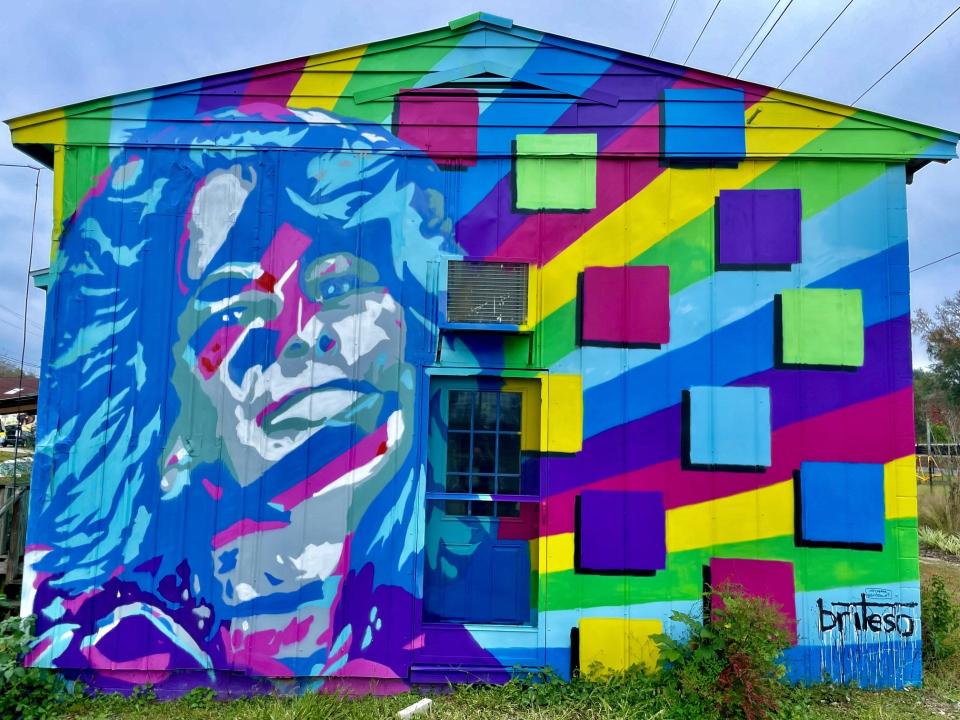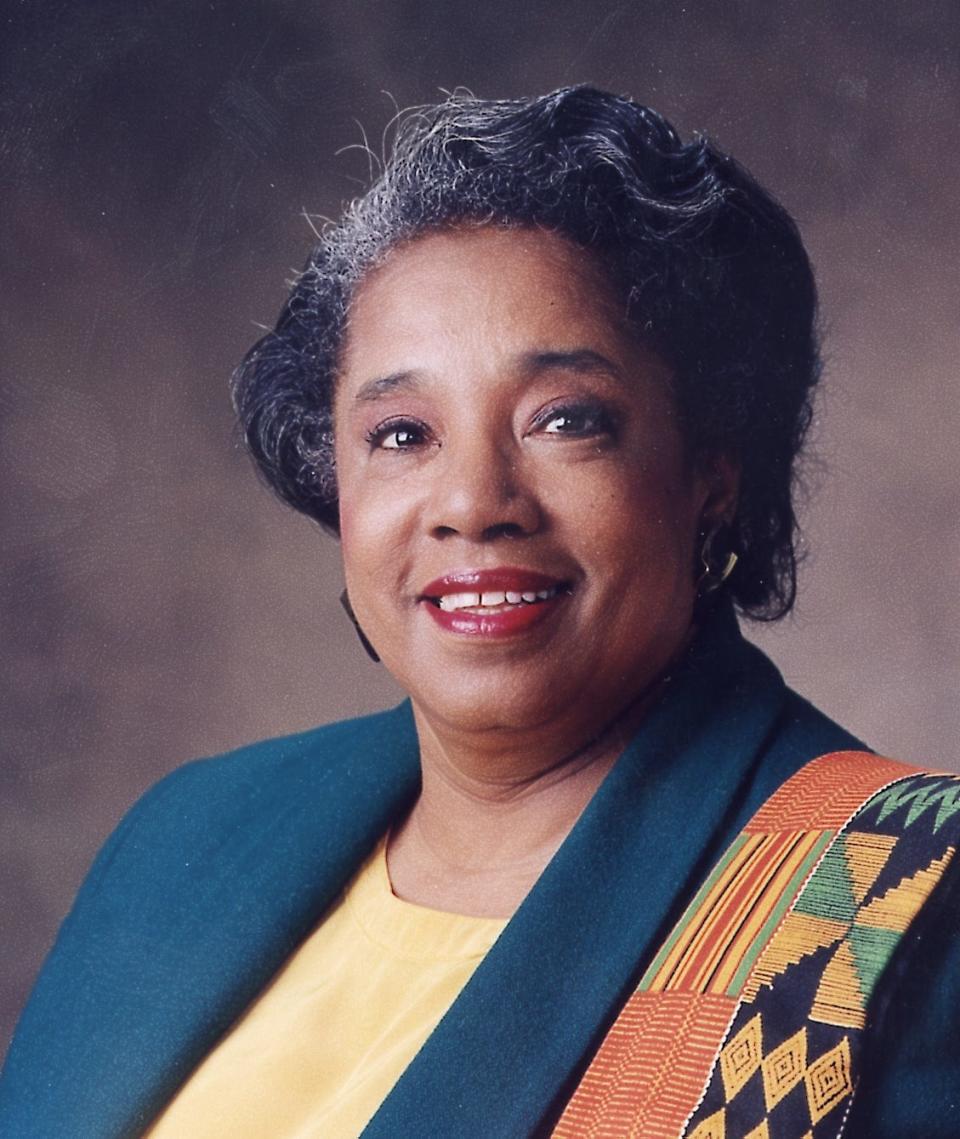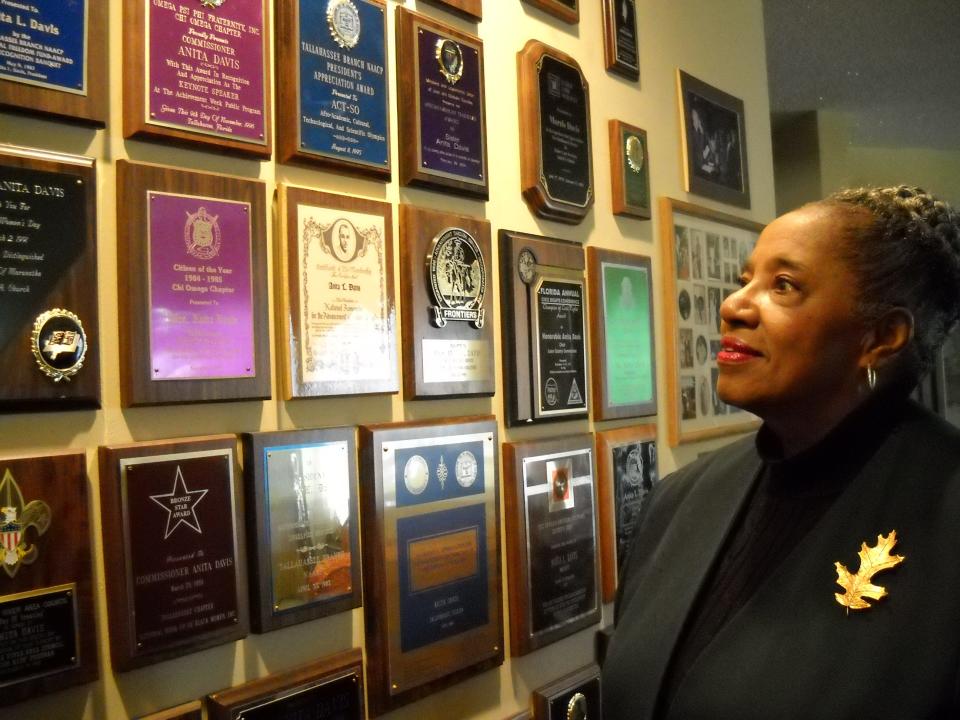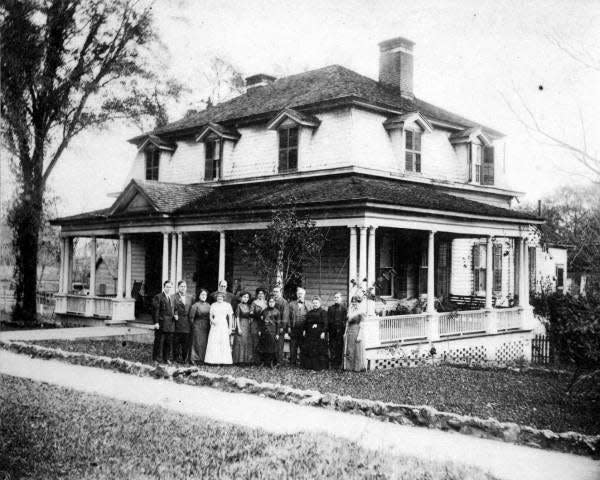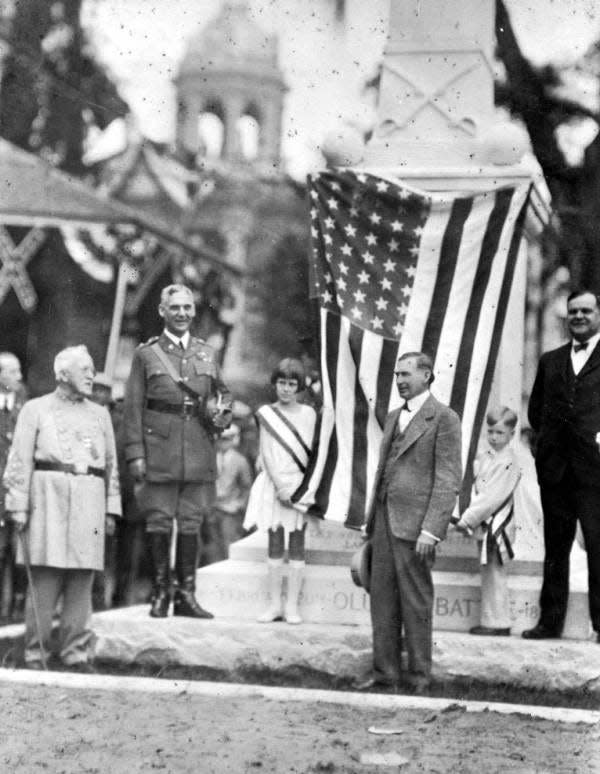The TLH 200: Gerald Ensley Memorial Bicentennial Project is proud to present our rolling list of 200 people who laid the foundation and contributed to the growth of the civil society we find today in Tallahassee.
As the city commemorates the 200thanniversary of its founding, the Tallahassee Democrat and Real Talk 93.3 have cast a wide net to find artists, educators, civil rights leaders, politicians, athletes, builders, business titans and neighborhood icons who have earned a spotlight.
But we need your help.
You can email your suggestions of candidates to be profiled and other suggestions to history@tallahassee.com. And listen to Greg Tish’s morning show on Real Talk 93.3 where we'll discuss the legacy of these history makers.
The only condition is that those featured below must be deceased. Ten names will be added twice a month, so be sure to check back for updates.
Without further ado, here are the first 50 names.
Fred Mahan (1886 - 1960)
On the east side of town where Hillcrest Avenue meets U.S. 90 there’s a 76-year-old marker that designates the highway from Tallahassee to Monticello as Fred Mahan Drive.
Fred Mahan was a horticulturist from Dodge City, Kansas, who had a passion for highway beautification.
He also created the Mahan Pecan, a pecan with a bigger nut and lighter shell, at his Monticello nursery.
In the 1920s, he would own the second-largest pecan and ornamental shrubs business in the southeast.
Coronet Magazine described him as a “strange philanthropist who bestows beauty instead of dollars" while "spreading scenic bounty across the state he loves.”
At the height of the Great Depression, Mahan donated thousands of plants to the county unemployment relief commissions for beautification projects to employ the jobless.
When a road company got a contract to remove tree stubs and make other road improvements along U.S. 90 between Tallahassee and Monticello, he contributed thousands of crepe myrtles, camellias, ligustrum, palms, and Pyracanthas to landscape the roadway as part of the project – creating 45 additional jobs.
The 26-mile long project from the east side of Tallahassee to the Monticello courthouse would take 15 years to complete.
When it was completed in 1948 and Mahan recognized with a marker then-state senator and future Gov. LeRoy Collins called Fred Mahan Drive “a corridor of goodwill" that connects the two cities.
It is said during his life Fred Mahan donated nearly 400,000 trees, shrubs, and flowers, to schools, churches, cemeteries, hospitals, parks, squares, and public thoroughfares.
Calvin Jones (1938 - 1998)
Calvin Jones would say, “The dirt don’t lie.” Jones would know. He made some of the most important discoveries of ancient humans in Florida during a 30-year career at the Florida Bureau of Archaeological Research.
Jones had an uncanny ability to look at a piece of land and predict whether artifacts would be found.
Working in advance of interstate construction near Tampa, Jones discovered the earliest tangible evidence of humans on the peninsula, dating to 12,000 years ago.
Across north Florida he uncovered a prehistoric site at Lake Lafayette, found the sites of nine Spanish era missions, and discovered the Apalachee burial mounds at Lake Jackson – which at the time was called the American pyramids.
Jones was a Texan, descendant of Creek and Cherokee natives.
“I can’t talk mythology, but I know what's in the ground,” Jones told the Tallahassee Democrat’s Gerald Ensley in 1997.
For years on his morning commute to work Jones had eyed a hillside opposite the State Capitol, suspecting it had a story to tell.
He got permission to poke around in 1987 and made his most heralded discovery – the 1539-40 winter encampment of Hernando de Soto.
Jones unearthed pottery, coins, and chain mail, to link the land to De Soto’s expedition – the first verified DeSoto camp from his exploration of the continent.
“You cannot disturb the earth without leaving imprints,” Jones said.
Daniel Dale Green (1955 -2002)
Tallahassee Police Department Sergeant Daniel Dale Green was shot and killed in an ambush while responding to a home-invasion on Melody Circle.
Green was a 13-year veteran with TPD, having served as an expert sniper, trainer, field supervisor, and a K-9 patrol officer.
As he approached the scene, Green observed a suspicious car with its engine running. He called in the vehicle’s description and tag number. The dispatcher then heard gunshots.
A second officer rushed to the scene; Green had been shot four times in the back of the head.
The suspect fled north, Green was rushed to the hospital, and law enforcement swarmed into the northwest sector where they sealed off Sharer Road near the Fun Station.
Gunfire was exchanged with the suspect who then surrendered.
At Tallahassee Memorial Hospital TPD officers, sheriff deputies, and Highway Patrol troopers stood watch. About 21 minutes after the suspect was taken into custody, Sgt. Dale Green’s death was announced.
Green left behind a wife and three children.
A Tallahassee native, Green was remembered as a “lover of music, fishing, and camping.”
“Everybody just loved him,” said then-city commissioner John Paul Bailey the night of the shooting.
Bailey, a retired police officer, had served with Green before Bailey's 1996 retirement.
In May 2014, Desoto Street was renamed Sgt. Dale Green Way
June Fouts Strauss (1930 - 2010)
June Fouts of Jacksonville arrived at the Florida State University campus in 1948 where she met Buddy Strauss,from a pioneer Tallahassee family.
The two married in 1950, raised six children, and June became Tallahassee’s volunteer extraordinaire.
A 1998 Tallahassee Democrat profile concluded no one had done as much to promote art and theater in Tallahassee or help as many abused children get a new start than June Fouts Strauss.
Businessman Mark Goldman said a photograph of Strauss should be listed in the dictionary with the definition for “superlative.”
“And I’m not prone to superlatives,” Goldman told the Democrat’s Dorothy Clifford.
Strauss served as a homeroom mother at Blessed Sacrament School (now Trinity Catholic) for 17 consecutive years (1957 – 1975).
And she helped organize iconic Tallahassee organizations and clubs.Strauss was a founding member of the boards for the LeMoyne Art Foundation, the Southern Shakespeare Festival, Florida State University School of Theatre’s Patrons Association, and the Governor’s Club.
In 1985, she established the first Boys Town USA campus outside of Omaha, Nebraska, where the 106-year-old residential care facility for youths was founded. She would serve on the organization’s National Board of Trustees for six years.
In 1986, Strauss played a key role in raising money to create the Tree House emergency shelter for abused and neglected children.
Strauss was the Tallahassee Democrat Volunteer of the Year for the Arts in 1980 and the Department of Children and Families nominee for the social services Volunteer of the Year in 1998.
She deflected any credit for accomplishments sent her way, saying the accolades belong to others.
“I'm a facilitator - someone else had the original idea," Strauss said.
The second Tree House site, established in 1989 is named the “June Strauss Tree House.”
Dr. Eva Wanton (1935 - 2014)
In remote west Africa you will find a library named for a Tallahassee language professor.
Dr. Eva Wanton of Thunderbolt, Ga., accepted a one-year appointment as a Florida A&M University foreign language teacher in 1964 and then decidedto makeTallahassee home.
At FAMU she would go on to become a full professor, a dean, an associate vice president, and a special assistant to interim president Castell Bryant.
She described her relationship with the school to Tallahassee Democrat columnist Gerald Ensley as a “love obsession.”
Students loved her back.
In 1997 when a university reorganization plan eliminated Wanton’s position, they launched a petition drive and held rallies on her behalf. Wanton was promoted to Vice President of Academic Affairs.
"I was kind of in awe of her brilliance," Eddie Jackson, the late FAMU communications director, said at her passing.
"Her control and mastery of English was so great and so graceful. It was a joy to hear her speak. Whenever I saw she was going to speak (at an event), I knew I was in for a treat.”
Wanton loved to travel. One trip took her to Ghana where she came across a village where animals and children shared the same water supply.
Back home she told her church what she had seen. The Africare Ministry at Bethel Missionary Baptist Church dug the village a well and adopted their school.
If you go to Mampong, Ghana and stop at the Bong Rong School you can visit the Dr. Eva C. Wanton Library and Computer Laboratory.
It was dedicated in 2017 to the professor who connected the village to a Tallahassee church that helped raise the money to build, equip and staff the school.
Judge Joseph Woodrow Hatchett (1933 - 2021)
Joseph Woodrow Hatchett of Daytona Beach came to Tallahassee to study at Florida A&M University and became a man of many firsts.
Hatchett was the first Black Florida Supreme Court Justice, the first and only Black man to win a statewide election, and the first Black federal appeals court judge in what was once the Confederacy.
He accomplished this after Jim Crow prevented him from having lunch or staying overnight in the hotel where the Florida Bar examination was administered.
Hatchett passed the bar and today the federal courthouse in Tallahassee is named in his honor.
A FAMU and Howard law school graduate, Hatchett was remembered by former clerks, and colleagues as a jurist who never lost faith in law as an instrument of justice.
A former clerk said in Hatchett’s 600 opinions you find a deep compassion for protecting the rights of people, especially the oppressed.
Gov. Reubin Askew appointed Hatchett to serve on the Florida Supreme Court in 1975. The next year he stood for reelection and became the first Black man since Reconstruction to win a statewide election in the South, and remains the only Floridian to do so.
“I wonder if Judge Hatchett could have imagined ..., the United States Courthouse in Tallahassee, Florida’s Capitol, just blocks from his alma mater, would be named the Joseph Woodrow Hatchett U.S. Courthouse and Federal Building,” former Hatchett clerk and now Eleventh Circuit Judge Charles R. Wilsonsaid at the courthouse designation ceremony in 2023.
Romulus Thompson (1906 - 1996)
After Leon schools decided to form a Leon High School Redcoats Marching Band in 1939 a statewide search found Romulus Thompson, the Crestview High School band director and a former assistant director at DeFuniak Spring schools.
The 34-year-old Thompson moved to Tallahassee, rallied the community to help outfit the unit and recruited 89 "students interested in learning how to play band instruments."
Thomas designed the Redcoats uniform in the style of the West Point Military Academy, substituting a rich red for West Point gray – and placed an order with the Fitchheimer Company, West Point’s supplier.
During the 1940s,under Thomas’ direction, the Leon High School Marching Redcoats became one of the highest rated and most well-traveled bands in the state.
“Of course, we had the finest students you ever saw, absolutely outstanding. There was no reason it couldn’t be a great success,” Thompson said at the 50th reunion/anniversary of Leon’s first band.
Thompson's leadership style, enthusiasm, and success both in Crestview and Tallahassee drew comparisons to Professor Harold Hill from the musical “The Music Man.”
At both locales, he had a band ready to march in parades and entertain at halftime of football games.
The Redcoats performance at the Northwest Florida Music Festival in the mid-1940s led a judge from Northwestern University to proclaim “I have never seen a more ingeniously planned performance on the field. This performance would be a sensation at any contest in the United States."
Thompson stayed at Leon until 1950 when he accepted the band director position for Jefferson County High.
In 2000, the state honored Thompson as a Great Floridian and installed a plaque at Leon High School at Meridian Road.
Lydia Smith (circa 1820- 1885)
Lydia Stout was the free, well-educated mulatto cousin of George Proctor son of Antonio, a scout on the mission to find a location for a state Capitol. Sometime in the 1840s, George persuaded Lydia to leave the Bahamas and come to Tallahassee and be the governess for six children.
John Proctor told the Federal Writers’ project his father George set off to California to look for gold and Lydia apparently came to town to help his mom Nancy.
Once here Lydia would marry the Rev. James Smith.
Lydia and James would embark on careers in teaching; they opened two schools. And the couple did missionary work through the Methodist Church in post-war Tallahassee.
Historian Lee Warner in "Free Men in the Age of Servitude," a three-generation account of the Proctor family, finds an 1850s Floridian editorial by Charles Dykes that praised Lydia's teaching skills and called on the community to encourage this “well-known colored lady” in her church work.
Warner is convinced that Lydia also was the subject of a Freedmen’s Bureau inspector’s 1865 report from Tallahassee that described a school of “interesting girls” with a “mulatto woman of education,” who announced she intended “to make ladies of these girls.”
The Smiths would open a school known as The Academy in post-war Tallahassee with about 100 students.
Their last known residence was 314 West Park Avenue.
Bill Peterson (1920 - 1993)
A Toronto, Ohio native, Bill Peterson coached FSU football from 1960 through 1970. He inherited a club that went 4 – 6 before his arrival and 3-6-1 in his first season.
Peterson then introduced the country to FSU football. He recorded the program's first victory over the University of Florida in 1964, beat an until-then-undefeated and top-ranked Kentucky, and had a breakthrough season in 1967 for a football program that began playing in 1948.
The Seminoles went 7-2-2 that year with stunning performances against Joe Paterno's Penn State University and blue-blood programs like Texas A&M, and the University of Florida – again.
Before the largest television audience the team had ever performed, the Seminoles fought the Nittany Lions to a 17 – 17 tie in the Gator Bowl.
Seminole faithful say that day on Dec. 30, 1967, FSU, the football team and the university, landed on the national stage.
TheSan Francisco 49ers offered Peterson a job.
He turned down the NFL, telling the Tallahassee Democrat his family liked Tallahassee and it was a good place to bring up children.
“I’m going to stay right here and work toward one more objective – a national championship for FSU,” Peterson said.
The newspaper responded with an editorial that “Coach Pete already is number one in the eyes of Tallahassee."
Will Peterson, a grandson, said the coach uncharacteristically clipped and saved the piece.
He also signed FSU's first Black football player. He hired Bobby Bowden as an assistant, he introduced a pro-type passing game to college football, and he posted a 60% winning percentage.
Twelve of his former assistants went on to become head coaches, including Super Bowl winners Joe Gibbs, and Bill Parcells – and two-time NCAA National Championship coach Bobby Bowden.
And there are the Petersonisms that delighted Tallahassee.
One day he told his players “to line up alphabetically by height” for photos. Another time he announced to friends that, “The greatest thing just happened. I got indicted into the Florida Sports Hall of Fame.”
Peterson's relationship with the city was such that when Will did a search of the Tallahassee Democrat 1960 archives Coach Bill Peterson was mentioned more times than governors Claude Kirk, Leroy Collins, and Farris Bryant.
At his passing, legendary sportswriter Steve Ellis wrote Peterson is “one of the single most significant contributors to the success of Florida State Athletics.”
Sharyn Heiland Shields (1946 - 2023)
Atlantic City native Sharyn Shields earned a Master of Arts in dance at Florida State University. She met her husband John, taught at Tallahassee Community College, the University of Florida and Hunter’s College in New York, and then returned to Tallahassee where she became a fervent scholar of archaeology.
Shields worked as a Historic Preservation Grants supervisor for the state of Florida, and as an exhibit manager for the Institute of World War II in the FSU history department.
While a FSU masters student, Shields began to research Benjamin Chaires' Verdura plantation, which was in east Leon County. Her thesis provided the first historical overview of the three-story, 15-room, 10 column mansion that sat on a 9,000 acres farm maintained by 300 enslaved people.
The thesis led to "Whispers from Verdura: The Lost Legacy of Benjamin Chaires," published in 2015.
Chaires had brought the railroad to Tallahassee, established the city’s first bank, and was a delegate to the Florida Constitution Convention. He died in 1838.
After the Civil War, through mismanagement and family scandal his heirs lost the plantation. The mansion burned in the 1880s; only rubble and a couple of columns remain today, along with Shields' account.
Tallahassee Community College history professor Bob Holladay said 20 years of research enabled Shields to illustrate “the grandeur of the Old South, the horror of slavery that accompanied it, and the ultimate tragedy of hubris that befell it.”
Nathaniel (1932 – 2000) and Julian “Cannonball” Adderley (1928 - 1975)
Julian Edwin Adderley and older brother Nathaniel Carlyle were the sons of Florida A&M University professors who grew up to be Florida’s music ambassadors to the world. In middle school, Nat and Julian played for what would become the FAMU Marching 100, and in high school they jammed with Ray Charles in Tallahassee night clubs.
After college and military service the brothers moved on to New York City in the 1950s and became international jazz legends.
Trumpeter Nat joined the Woody Herman sextet, Julian, a saxophonist known as “Cannonball,” landed with the Miles Davis sextet.
The two also formed The Cannonball Adderley Quintet, and in 1960 scored a national hit with the “Work Song,” inspired by a chain gang at work on Tallahassee’s Pensacola Street.
“They used convict labor to pave the street. The convicts used that call-and-response method to sing as they worked,” recalled Adderley in a 1994 AP interview about the lyrical playfulness he fused with soul, jazz, funk and blues in what became his biggest hit and a jazz standard.
Competing amidst a British invasion of American popular music in the mid-1960s, Cannonball topped the jazz, R&B, and pop charts in 1966 with “Mercy, Mercy, Mercy.”
When a stroke claimed Cannonball a month before his 47th birthday, Gov. Reuben Askew declared September 15, 1975, Julian “Cannonball’ Adderley Day across the state of Florida.
Nat died in 2000 of complications from diabetes. He was 68.
Hit parade: A roll call of some of the musical artists who hit the big time with Tallahassee ties | TLH 200
Both are buried in the Southside Cemetery in Tallahassee.
The Adderley Amphitheater at Cascades Park and the music institute at FAMU is named in their honor.
Jean McCully (1930 - 2014)
A Sparta, Tenn., nurse met an internist at a Memphis hospital in 1961, they married and moved to Tallahassee. Al McCully would be the third urologist to open a practice in the city, while Jean is remembered as a volunteer extraordinaire – Tallahassee’s “can-do woman.”
She raised money for the Girl Scouts’ overnight camp.Served on the Boys and Girls Club of the Big Bend, The Girl Scouts, and the James Madison Institute.Was president of the Garden Club.
She also was an original volunteer with the Red Hills Horse Trials. Jean cooked breakfast for the judges and then led botanical tours of the grounds.
McCully joined Friends of the Library when the library was housed in a former Elks Club and promoted construction of the block-sized downtown facility and its six branches
In 1983, Jean McCully successfully lobbied the director of Tallahassee Memorial Healthcare to bring hospice under the hospital umbrella. In a single day, she raised $60,000 to bring ballet superstar Mikhail Baryshnikov to Tallahassee for a performance to benefit the program.
“It’s not like she would strut on stage. You never knew she was involved,” recalled Marjorie Turnbull at McCulley’s passing.
“You had to ask, ‘Jean, did you do that?’”
The Jean McCully Family House at the Big Bend Hospice campus on Mahan Drive recognizes her work for the community.
Romero Mitchel Sealey (1889 - 1928)
R.M. Sealey arrived in Tallahassee from Fort Myers in 1916 to become principal of Leon High School and over the next 12 years would shape the course of Florida public education for much of the 20th century.
“Few men have had such an overwhelming and beneficial impact on a city [Tallahassee] in such a short amount of time,” Florida State College of Women President Edward Conradi wrote upon Sealey’s death in 1928. “His accomplishments as both a leader and a friend are truly unparalleled.”
In Fort Myers, Sealey led the Gwynne Institute and had solicited Thomas Edison and Henry Ford as supporters to build that city’s first high school. He continued to promote public education in Tallahassee as the Superintendent of Leon County Schools and then the state Superintendent of High Schools, where he standardized high school curriculums and testing requirements.
Sealey also established the Florida Education Association and organized Tallahassee’s first Boy Scout Troop.
While enroute to the National Education Association convention in Boston in 1928, the 39-year-old Sealey suffered a cerebral hemorrhage in Washington, D.C.
“Although he was a man among men. He was never too busy to talk to a boy or girl about concerns and to provide the advice and encouragement to help them achieve their goals,” said Bunyan Stephens, pastor of the First Baptist Church.
The entire student body of Leon High School attended the service and burial at Oakland Cemetery. The Tallahassee Dailey Democrat described the funeral as one of the largest in city history.
Sealey Elementary School on Allen Road is named in his honor.
John McIver (circa 1800)
On April 9, 1824, John McIver led the first group of white settlers to Tallahassee. A horse-drawn wagon from North Carolina carried seven pioneers; two white men, two women, two children, and a mulatto man on a mission to build a log cabin to serve as a capitol building for the new Florida territory.
The group pitched a camp on a hillside south of the present-day intersection of Apalachee Parkway and North Monroe Street. Tallahassee Democrat columnist Gerald Ensley speculated it was probably located along present-day Gaines Street.
Replica in the works: City to recreate first Capitol – a log cabin – for bicentennial celebration this year
TLH 200: Cascades bicentennial journey: Waterfall to baseball field to brownfield to pinnacle park
McIver said the site was on a southern slope overlooking what could very well be a picture book fairyland.
“To the southward and westward, the country opened to view like a magnificent park, gently undulated and studded with beautiful basins of limpid water, at their feet a crystal fountain gushing from the declivity of the hill; to the eastward the view was more confined by the thick foliage of the undergrowth which served to screen the view through not the sound, of a beautiful cascade,” he wrote in the “Memorial of John McIver of the City of Tallahassee."
The group cleared a site on top of the hill, two Gadsden County planters sent slaves to help build a cabin and two annexes. The work was completed in time to accommodate the Legislature’s first Tallahassee session that November, and within a year more than 50 homes and two hotels were constructed.
McIver would stay in town. He would become the first Territorial Clerk of the City of Tallahassee and the auctioneer for the sale of the first house lots sold.
Lucille Baldwin Holliday Brown (1922 - 2019)
Born and raised in the historic Smokey Hollow neighborhood, Brown is remembered as someone who loved history, books, and laughter. Brown worked as a librarian in Leon County Schools at Bond Elementary, Bellevue Middle School, and Griffin High School – and sold encyclopedias in her spare time.
In the 1940s, Brown and Gladys P. Anderson pushed to open the library at the then Black-segregated Lincoln High to the adult public. Principal Gilbert Porter explained to the Tallahassee Democrat that there was a “dearth” of reading material in Black households.
In addition to its collection of books the school library also had subscriptions to the Tallahassee Democrat, several Florida newspapers, the Atlanta Constitution, The Baltimore Afro-American, the Sunday New York Times, and the Christian Science Monitor.
Brown worked for the county school district for 39 years and in the latter part of her career took a night job at the public library.
“Back then, there was never an African American that had worked in a library,” recalled Riley Museum Founder Althemese Barnes at Brown’s passing. “So, we were happy to see her there.”
Blanche "Bunky" Atkinson (1929 - 2022)
Blanche Younis Atkinson was born in Tallahassee to Lebanese immigrant parents who ran a peanut/hamburger stand on Adams Street where the House Office Building stands now.
She was a registered nurse with the Leon County Health Department and married to Glenn F. Atkinson. They would have four daughters.
Bunky went to work for the county’s civil defense during the Cuban missile crisis and stayed with the agency as its mission shifted from war to peacetime concerns of natural disaster response and hazardous waste management.
Atkinson was director of Civil Defense and Emergency Preparedness for Leon County in 1985 when Hurricane Kate roared through Tallahassee’s urban forest and paralyzed city roads with downed trees that left most of the city without electrical power.
Atkinson wanted to impose a curfew until the roads were cleared, but state emergency management officials told her there were no procedures to do so.
So, she wrote an outline for how a community could require residents to remain indoors after the sunsets and presented it to County Commission Chairman Lee Vause and Tallahassee Mayor Hurley Rudd to sign.
“She knows how to get things done. She’ll talk you out of an arm and a leg,” recalled former Tallahassee Police Chief Melvin Tucker at Atkinson’s retirement in 1987.
A curfew was imposed from 7 p.m. Friday, Nov. 22, to 7 a.m. Saturday, Nov. 23, 1985. It allowed for only law enforcement, and road and utility workers to be outside.
By Saturday afternoon enough tree litter was cleared from the roads and electricity restored to lift the curfew.
“I think it’s the only 24-hour period in Tallahassee history where there was not a single crime, not a single arrest. Everybody stayed home,” Atkinson told Tallahassee Democrat’s Gerald Ensley on the 25th anniversary of Kate.
Clyde Spencer (1916 - 2005)
Clyde Edward Spencer had a life-long love for trains. After he graduated from high school in New Smyrna Beach he got a job with the railroad, married Sara Lee Boynton, and moved to Tallahassee.
Spencer was the railroad round-house foreman in charge of maintenance of all the locomotives that moved troops and supplies between Tallahassee and Fort Gordon Johnson during World War II.
In 1948 he left the railroad and with proceeds from a patent for a device that extracted gum turpentine out of wooden barrels. He then opened the Royal Sandwich Company.
From a Gamble Street storefront, he catered to state office buildings and universities.
Spencer deployed trucks and vending machines, supplying sandwiches, soda, and cigarettes to 125 locations across the city and at the airport in the 1950s.
Once Florida State University fielded a football team, Spencer, a founding member of the Seminole Boosters, would employ up to 150 teenagers a game to hawk Coca-Colas, hot dogs, and peanuts at Doak Campbell Stadium.
“Why half the boys that have grown up in this town have worked for me out there. I’m proud when they tell me I gave them their first job,” Spencer told Tallahassee Democrat Editor Malcolm Johnson for a 1974 article on a change in federal child labor laws.
Spencer closed his sandwich and concession businesses in 1975. He became a developer and built several apartment complexes near the universities.
George Lewis II (1913 - 1996) and Clifton Lewis (1919 - 2014)
George Lewis II was the great grandson of B.C. Lewis, founder of the Lewis State Bank in 1856, and served as the CEO through the 1950s and 1960s. Under George, Lewis State Bank provided home and business loans to the Black community when other financial institutions refused to do so. It was also the source of bail money for protesters during the bus boycott and other demonstrations.
George was also a member of the Florida Advisory Board of the United States Commission on Civil Rights.
Know their names: A roll call of civil rights leaders who helped shape Tallahassee
Clifton was in the first first-grade class at Caroline Brevard Elementary School, graduated from Leon High School as the 1936 Tallahassee May Queen, and is remembered for her love of art, people, and good government.
Clifton began what would become the LeMoyne Art Foundation in the lobby of the Lewis State Bank and was the first president of the board for what would become the Tallahassee Museum of History and Natural Science.
She also lobbied the Governor and Cabinet, and the Leon and Tallahassee commissions to televise their meetings on public television. Local legend holds her dissertation-length presentations at local meetings resulted in both the city and county commissions setting time limits for public comments.
George and Clifton convinced architect-artist Frank Lloyd Wright to design a home for them in Tallahassee. The Lewis Spring House on Ohkeeheepkee Road was completed in 1954 and served as their home until their respective deaths.
The Lewis Spring House was placed on the National Register of Historic Places in 1979. In 1996, Clifton formed the Spring House Institute Inc., to transform the Lewis home into a teaching institute for the arts and humanity.
Rev. King Solomon Dupont (1903 - 1983)
King Solomon Dupont was the grandson of a man bought in Virginia and enslaved on a farm 12 miles west of Tallahassee. In 1957, he was the first Black candidate in a city election.
Dupont served as the lead pastor at Fountain Chapel AME Church and a founding member of the Inter-Civic Council, which organized the 1956 bus boycott.
The only issue the white incumbent Davis Atkinson wanted to discuss was how his opponent was “a candidate who is owned lock, stock, and barrel by the Negro InterCivic Council and the NAACP, two organizations whose only existence is for the purpose of the integration of the human races, a program of mixing just to be mixing.”
Dupont said he was concerned about high utility rates, and “better living quarters for low-income families.”
Three plate glass windows at a Black grocery store were smashed by bricks, one which police said had an obscene note attached warning Dupont not to run. At night white youths would drive by Dupont’s church and residence hurling insults.
Voter registration surged – a more than 40% increase to 13,000 – and the number of ballots cast more than doubled compared to the previous election.
With three quarters of registered voters white, Atkinson won reelection with 74% of the vote.
Data expert Matt Isbell's analysis of precinct results reveals a near perfect correlation (0.99) of race to vote. Tallahassee Democrat columnist Gerald Ensley also crunched the numbers and concluded no Black Tallahasseeans voted for Atkinson and 87 whites voted for Dupont.
It would be another 14 years and eight unsuccessful Black candidates before a Black person won an election in Leon County: James Ford would successfully walk the path first blazed by Dupont and win a city commission seat in 1971.
Dupont is included in the Tallahassee Civil Rights Oral History collection of interviews conducted by Dr. Jackson Lee Ice during the summer of 1978.
His name is one of 50 Civil Rights Foot Soldiers engraved on the Civil Rights Heritage Walk Memorial along Jefferson and Monroe streets. And both Dupont Drive and King Solomon Drive off of Wahnish Way are named in his honor.
Charles Louis Napoleon Achille Murat (1801 - 1847)
Charles Louis Napoleon Achille Muratwas known as Achille and was the eldest son of Joachim Murat, the brother-in-law ofNapoleon and King of Naples. When Napoleon was exiled, in 1815 Murat's father was executed and the rest of the family fled to Austria.
Seven years later, Murat took a room in the same Washington, D.C. boarding house as Richard Keith Call, the Congressional delegate for the Florida territory.
The two became lifelong friends and by 1825 Murat bought a plantation 15 miles east of Tallahassee.
He named it Lipona, an amalgamation of his native Naples.A year later Murat married Catherine Daingerfield Willis Gray.
Murat took the oath of citizenship in present-day Jefferson County and became an attorney, county judge, and director of Union Bank.
Murat would purchase three plantations in the area. While he spent much of his life trying to recoup his family’s lost fortune, he lived long enough to see Union Bank foreclose on The Lipona.
Historians consider Murat a man of eccentric ways.
He had an aversion to water internally or externally. He never drank it without adding whisky to it.
He rarely bathed. Once, while onlookers feared he would be scalded after falling into a vat of syrup on a sugar plantation, Murat’s only comment was, now “Kate will make me wash.”
Murat kept a shaggy dog to use as a spittoon and cooked and ate all kinds of animals. Among his culinary experiments was an alligator-tail soup, which he wrote was “a little better than turkey buzzard soup.”
He found New Orleans to be home to “"the worst descriptions of French literature,” North Carolina “a bad imitation of Virginia,” and Charleston, S.C., “the city par excellence.”
Ralph Waldo Emerson was caught in a storm at sea with Murat anddescribed him, as “a philosopher, a scholar, a man of the world; very skeptical but very candid, and an ardent lover of truth,” with “manners elegant to perfection.”
But the historical record does not always support Murat’s account of frontier Florida.
He and David Macomb dueled at Lake Iamonia either because Murat’s hungry slaves stole Macomb’s hogs or because Macomb supported Kentucky Sen. Henry Clay in a dispute with President Andrew Jackson.
Murat’s bullet pierced Macomb’s cloak without touching skin. Macomb shot off the little finger on Murat’s right hand.
Murat would pass in Tallahassee with Catherine by his side. His last words were said to profess his love for her.
Achilles and Catherine are buried in the St. John’s Cemetery. Their graves are marked by unobtrusive shafts of marble.
Herb Morgan (1943 - 2003)
Herb Morgan was among the 1974 class of young reformers elected to the Florida House of Representatives. He would represent Tallahassee for 12 years in the Legislature.
Morgan chaired the Appropriations Committee for six years and the agenda-setting Rules Committee for two. He used the positions to pass landmark growth management regulations, enhance services for those with disabilities, save the Historic Old Capitol from demolition, and create the FAMU/FSU College of Engineering.
An insurance executive, Morgan also served on the boards of Tallahassee Memorial Healthcare and Tallahassee Community College.
At his passing, Morgan was remembered as a loyal, helpful friend and a man of integrity. Former Congressman Al Lawson who served with Morgan in the House said he and others had nicknamed the Tallahassee lawmaker “St. Morgan.”
In 1991 Florida State University awarded Morgan the James D. Westcott Distinguished Service Medal, the school’s recognition for those “whose life and work exemplifies the Vires, Artes and Mores, which the university seeks to nurture in its students.”
The Herb Morgan Presidential Scholarship is available to business students in their junior year.
Marie Louise Morris DeVere DeMilly (1818 – 1898)
Twelve-year-old Marie (Maria) DeVere arrived in Tallahassee in 1831. Her family migrated from France to join the abolitionist community that sprouted in today’s Frenchtown neighborhood.
Agents swindled her father out of the land grant from General Marquis de Lafayette, and then yellow fever claimed both parents, leaving Marie and seven siblings orphaned in a “strange country of a strange language without any means at all."
“It was a terribly sickly year. People were dying on every side, and we were all prostrated with sickness. Thank God, we met kind friends,” Marie recalled in an 1876 letter to a younger brother.
The children were divided up among Tallahassee families. Maria is listed as a member of the St. John Episcopal Church in the 1832 parish registry.
She would marry John Louis DeMilly four years later, and they built a two-story home at 303 North Gadsden, where Capital City Bank has offices today.
In 1847, they leased another home at 100 Bronough Street, it’s now called “The Columns” and are the offices of the James Madison Institute. Marie ran it as a boarding house.
The 1860 census shows the couple also owned the famed City Hotel on Adams Street.
Marie was mother of 15 children – eight passed in childhood. A family memorial stands in the Old City Cemetery.
Antonio Proctor (circa 1750 – 1855)
Gov. William DuVal considered Antonio Proctor “indispensable” to Florida’s beginnings.
Proctor is best known as a scout and interpreter for the Simmons/Williams expedition that selected the site for Florida’s capital city.
Born a slave in Santo Domingo, Proctor’s linguistic skill was his ticket to events that connect the revolution to Florida’s transition from a Spanish colony to a U.S. territory.
Proctor served as a translator, at different times, for the three main powers that jockeyed for control of the North American continent – the Spanish, British, and U.S. governments.
Proctor was an interpreter for the British at the Battle of Lexington.
His service to Spain during the War of 1812 led to a royal order from the king that granted him his freedom and 185 acres of land along the Sebastian River.
When the U.S. acquired Florida, DuVal hired him. He was on the Simmons and Williams expedition as a scout. Then as an interpreter he helped the U.S. negotiate the Treaty of Moultrie Creek and the Treaty of Payne’s Landing.
“Proctor’s skills proved indispensable. Invaluable to the United States at a period when no other person could have preserved the peace of the country,” wrote DuVal.
Proctor retired to Tallahassee in 1826 with his son George, an architect and builder. He passed at the home of Henry L. Livingston – off of present day Calhoun Street, in 1855.
Charles U. Smith (1923 – 2015)
A tall, lanky engaging man with a distinctive moustache, Charles U. Smith was an outspoken professor and organizer.
Smith grew up in Birmingham, played football at Tuskegee University, was the second Black man to earn a Ph.D at Washington State University and became chair of the Florida A&M University sociology department in 1951.
Smith encouraged, supported, and participated in the student protests of the 1950s and ‘60s. A dedicated researcher, he documented the civil unrest in Tallahassee and across the south as it unfolded in 14 books and numerous academic papers.
In a segregated community where few dissidents spoke out, Smith consistently attended city commission meetings to criticize commissioners’ decisions. A 1956 lease that kept the Capital City Country Club segregated until 1971 was a frequent complaint.
Smith was the first Black professor at Florida State University and the first Black chair of the Leon County Democratic Party.He also served as director of FAMU graduate studies from 1979 until his retirement in 1997.
He led the effort to rename Canal Street FAMU Way, after the roadway received a multi-million-dollar expansion.
Now, family and friends want to rename the pedestrian bridge that spans South Monroe Street and connects FAMU Way to Cascades Park, the Dr. Charles U. Smith Crosswalk. They say it is a fitting honor for someone who spent a lifetime dedicated to changing the political and physical landscape of the city where he lived.
David Shelby Walker (1815– 1891)
David Shelby Walker of Russellville, Ky., moved to Tallahassee in 1837, where he was admitted to the Florida Bar and opened an office downtown.
Walker would marry Philoclea Edgeworth Alton of Leon County in 1842 at St. John’s Episcopal Church.He was a kindred spirit with Bishop Francis Huger Rutledge who refused to justify slavery on theological grounds.
During the next five decades in Tallahassee, Walker would serve as the state Superintendent of Public Education, a member of the Florida House of Representatives, the Florida Senate, a justice of the Florida Supreme Court and governor.
As the state’s first post-Civil War governor, he dedicated his administration to public education. His first message to the Legislature urged a law “for the education of colored people.” He opened the Florida Agricultural College in Lake City, a forerunner to the University of Florida.
Walker’s advocacy led to the first public school in Tallahassee being supported by city taxes. He donated his personal library to an institution in 1883 that would become Tallahassee’s first public library.
David Shelby Walker is the father of public education in Tallahassee. Walker Library on Park Ave, (now Bar 1903) is named for him.
Judge Alan C. Sundberg (1934 – 2002)
People say Alan C. Sundberg brought a common man’s touch to the law.
Gov. Reuben Askew appointed the Jacksonville native to the Florida Supreme Court in 1975, a time when the Court was stained with scandal, impeachments and resignations.
He reorganized the court as chief justice from 1980 to 1982 and restored its reputation and image.
His most significant opinion came in a 1979 case that allowed cameras inside the courtroom. Sundberg found cameras did not violate a defendant’s constitutional rights and their presence was consistent with the state’s commitment to open government.
The decision came right before the trial of Ted Bundy for the Chi Omega killings.
In private practice for the Carlton Fields law firm Tallahassee office, Sundberg represented governors and legislators.
He also represented tobacco companies in a highly publicized effort to overturn the law that enabled the state to file a multimillion-dollar lawsuit for reimbursem*nt of Medicaid money.
Sandy D’Alemberte hired Sundberg in 1997 to be general counsel at Florida State University when D’Alemberte was president (1994 – 2003).
“He was a wise counselor – a lawyer statesman,” D’Alemberte recalled at Sundberg’s passing.
Robert and Trudie Perkins (1922 –1994/ 1921 – 2013)
The two Florida A&M graduates opened Perkins Service Station and Beauty Shop at the corner of Osceola Street and Railroad Avenue in 1955. Their marriage of two different enterprises, a garage and a salon, united by a shared tradition of serving as gathering spots for men and women, would become a neighborhood legend.
The Perkinses, among other things, extended credit to the Bond community.
Robert was a FAMU professor who tutored math and chemistry students while he repaired automobiles at night.The Perkins kitchen table was also employed for such purposes.
The three pumps outside his garage provided the gasoline that powered the 1956 Tallahassee Bus Boycott. And together Robert and Trudie stood up in court and used the judiciary to advance social justice.
That effort led to the issuance of a Federal Consent Decree that ended segregated hiring practices by the City of Tallahassee.
Know their names: A roll call of civil rights leaders who helped shape Tallahassee
Trudie would be the only Black student to graduate from the Lively Vocational School Licensed Practical Nursing Program in 1967 and one of the first Black nurses hired at Tallahassee Memorial Hospital.
When pleas for a playground for Black youth went unheard by the city commission, in 1954, Robert Perkins and Charlie Jenkins loaded their vehicles with kids and took them to play at recreation centers and parks in white neighborhoods.
Soon thereafter, Jake Gaither Park and Recreation Center was constructed.
In 2021 Gamble Street was renamed Robert and Trudie Perkins Way.
George Washington Saxon (1848 – 1935)
It was said at the time of his passing that the life of George W. Saxon, son of Leon County pioneers Henry Saxon and Elizabeth Oliver Hale, mirrored the growth and development of his community.
Saxon opened a dry goods store in Tallahassee in 1885 called G.W. Saxon and Company. It offered banking services that would be incorporated as Capital City Bank, ten years later.
Saxon opened a branch office in Apalachicola in 1897 – the Coastal Community Bank is at the site where he established a branch office – and serve as bank president until 1920.
Today, the bank Saxon started in a dry goods store is known as the Capital City Bank Group, one of America’s oldest banking institutions with total assets of $4.3 billion.
Saxon was a Civil War veteran, serving in the Gamble Company from 1861 to the close of the war.
He served on the Tallahassee City Commission and negotiated the sale of a local water company to the city – a loan for the purchase going through his bank.
Saxon also co-founded Tallahassee’s first telephone company. He owned part of St. George Island, and in 1905 when the Legislature agreed to build a new governor’s mansion but failed to appropriate money to buy land for it, Saxon donated the property.
George W. Saxon married Miss Sara Ball of Gadsden County in 1878. They would have two daughters. George would pass one week to the day after Sara.
Dr. Alexander Dumas Brickler (1929 – 2023)
In 1957, Alexander Dumas Brickler conceded to his father-in-law's request to relocate to Tallahassee – obstetricians were hard to come by and the city’s Black residents needed one.
The New Jersey-raised Brickler arrived in town to set up shop at the Florida A&M University hospital. He found South Monroe and South Adams streets were unpaved and was shocked by the in-your-face racism. "For whites” signs hung above water fountains in the state Capitol.
Brickler went to work.
Over the next 60 years, it is believed he delivered more than 30,000 babies, trained at least 300 physicians and built a reputation as a someone who was unstintingly generous with his time and talent.
In the middle of the 1960s, M.T. Mustian, the CEO of Tallahassee Memorial Hospital, called Brickler for help with a problem.
Mustian knew the hospital had to desegregate. Both he and Brickler knew white residents would oppose the move.
The two wrestled with how to initiate change without disrupting healthcare in the city. Brickler's DNA included the ability to navigate difficult political terrain. He was a great nephew of abolitionist Harriet Tubman, who guided runaway slaves to freedom on the underground railroad.
The good doctor recommended starting with a baby step. After-all Brickler reasoned, FAMU Hospital's standard of care was more than comparable to TMH’s. The two agreed to switch indigent care to FAMU, including that for poor white pregnant residents.
Desegregation of medical services in Tallahassee had begun.
The Women’s Pavillion at Tallahassee Memorial Healthcare was named in Dr. Brickler’s honor before his retirement in 2019.
Richard Davis Thomas (1920 – 2016)
Rev. Richard Davis Thomas had served in Missouri and Arkansas before he, Virginia, and their five children arrived in Tallahassee in 1956 for him to be the lead pastor at First Presbyterian Church.
He supported efforts to integrate lunch counters and movie theaters. At one protest, he said, he had never seen such hatred as to watch girls urge their boyfriends to kill demonstrating Black students.
When word spread that a group of Florida A&M University planned to attend Sunday services at First Presbyterian, parishioners wondered how to respond. Thomas said if anyone was turned away, he would dismiss church and resign.
When the Florida Presbytery became upset with Minister Metz Rollins, a Black man, and his work on the bus boycott, they stopped paying part of his salary. Thomas had First Presbyterian pay the difference.
When the Tallahassee City Commission refused to appoint a commission to recommend how to dismantle segregation, the Tallahassee Ministerial Association created such a committee and named Thomas the chair.
Under his leadership, First Presbyterian set up the first integrated preschool in Tallahassee and provided scholarship for pupils who needed them.
Virginia recalls there were many nights when she was home with their children, fielding hostile phone calls, and one night in particular she worried he would not come home. But according to the Healing Racism Task Force at First Presbyterian, Virginia said the family never felt physically threatened.
On January 2024, First Presbyterian installed a plaque outside the church sanctuary that apologizes and asks for forgiveness for turning away people of color from the Civil War until the 1950s.
In a pledge to "repair racism's reach," the plaque echoes Thomas' ultimatum to leave the church if congregants did not welcome all, no matter the color of their skin.
Richard, Virginia and the family left Tallahassee in 1968 when he accepted a position in New Port Richey. They returned in 1985 and the Reverand attended First Presbyterian until his passing. Friends remember Richard Davis Thomas as a St. Louis Cardinal fan and avid fisherman.
Parwez Alam (1945 - 2018)
Known simply as P-A, Parwez Alam was a straight-talking, no-nonsense engineer from Karachi who had worked for the Nigerian government, and Defuniak Springs when Leon County hired him to be the Public Works Administrator in 1989.
P-A mostly stood in the background while elected officials and community leaders celebrated the paving of new roads, construction of new facilities, and the opening of parks during his 22 years with the county.
But he was the one who made county government more transparent with hefty agenda packages for meetings. It was P-A who negotiated with residents, neighborhoods, and contractors, on where and how eight branch libraries would be built.
He partnered with the city to revitalize the Amtrak Train Depot and to build the $60 million Tallahassee Leon County Public Safety Complex.
And former employees tell us, P-A sent them looking for federal and environmental grants to build parks in the northwest and southeast corners of the county, and at Lake Talquin and near Lake Jackson.
And it was PA’s idea to write the county’s first Master Water and Sewer Plan, which led to a Tallahassee Leon County Water and Sewer Plan and a 17-acre lined garbage transfer station out on U.S. 27.
“The brilliance of Parwez Alam was a knack for identifying talent, elevating, challenging, and then supporting it to achieve some pretty amazing goals,” said Tom Brantley, who was one of Alam’s directors at the county.
“Parwez transformed and left Leon County a far better place, and his legacy of excellence remains to this day through the staff he developed,” said the retired Brantley.
Carolyn H. Brown (1935 - 2018)
Carolyn H. Brown was 18 and without money for school when she left the family farm in Washington County for Tallahassee.
Brown would stand in the vanguard of a changing America, with the charm and grace of “a true southern lady.” But it would take five years for her to get her footing in the capital city.
The young Miss Brown waited tables and cashiered seven days a week at the Quaker House and the Tallahassee Dining Room while taking cosmetology classes at Lively vocational school.
Five years later she was hired at the salon in the Duval Hotel. Then she and two coworkers joined together to open their own shop in the Capital Plaza, located in what was then a Tallahassee suburb. Brown took the lead as cofounder of Suburban Salon and until her passing 60 years later established herself as an entrepreneur, philanthropist and advocate for equality and diversity.
Suburban initiated a group health insurance plan for staff – something unheard of in the industry. It also led a group of salons in offering scholarships/loans to cosmetology students – interest free if paid off in two years or through service.
Suburban was the first in Tallahassee to hire a Black stylist, Annie Ford, to serve white clients. The decision led to threatening phone calls, but Brown told the Tallahassee Democrat for a story in 2007 the calls ended while the stylist remained.
She passed in 2018and the staff at the Suburban tells us Brown’s legacy is seen in the loyalty of their clients and the tenure of what they call their “staff family.”
Three of the six stylists have been on staff for more than 45 years, another two for 20, and one for 12.
And among their clients are some families that have had six generations of hair done by the salon Carolyn Brown, Gladys Brown (no relation), and Alice Melton opened 65 years ago at the newly built shopping plaza “way out there on Thomasville Road.”
Jim Fair (1918 - 1991)
James Searcy Farrior, known as Jim Fair, “champion of the little guy,” was a decorated World War II veteran, and former Hillsborough County Supervisor of Elections, whose court fights led to confinement in a state mental facility.
Gov. Claude Kirk removed Fair from office in 1968 for malfeasance, misfeasance, and incompetence – among other things he fired staff and hired people critics said were “Yippees,” who were highly theatrical free speech advocates of the 1960s.
Fair filed suits seeking reinstatement, was jailed multiple times for contempt of court, and was confined for six months in a a state mental hospital after being charged with trespassing.
A state hearing officer deemed him sane.
"Evidently, this man was sent to the hospital for some other reason" than insanity, said hearing officer Jon Caminez, according to a Tampa Bay Times report.
Released from a Chattahoochee facility, Fair settled in Tallahassee where he continued to fight the establishment.
He filed a handwritten brief to save an oak tree slated for removal to build City Hall.
He won a court battle to qualify a candidate for office with a petition rather than a filing fee.
He fought the city and won the right to walk through a drive-in booth to pay his utility bill.
In 1991, feeling ill, Fair who won seven combat stars in World War II as a Naval lieutenant commander, asked a friend for a ride to the veterans' hospital in Gainesville.
He was diagnosed with acute promyelocytic leukemia and passed within weeks.
"The one thing I'd like before I die is the correction that I'm a kook," Fair told the Times in a hospital bed interview. “Nobody was more serious about the government than me. I was a patriot. My whole life has been one of misunderstandings. I just tried to help people, and everything I did was twisted around by the cynical."
E.C. Allen (1922 - 2003)
A self-made millionaire, Evans Craig Allen built the nation’s largest mobile home dealer in the 1970s and is remembered as a generous contributor to his church, city, and higher education.
The fountain at Lake Ella, the Bosendorfer concert grand piano at First Baptist Church, the Southern Scholarship Foundation house at Florida State University, along with a swimming pool for East Hill Baptist Church, and bike lanes around town are all E.C. Allen contributions.
Parkinson's Disease claimed Allen in 2003.
“He gave to more people than anyone knows because, in many instances, he liked to remain anonymous,” said longtime friend John E. Hunt at the time.
Allen grew up in a home on North Boulevard Street that lacked indoor plumbing, and heating, except for a fireplace.
For his 75th birthday he and Matilda, “Tillie” Allen hosted several hundred guests at a Hawaii-themed dinner at The Moon, which this newspaper described as “one of Tallahassee’s most glittering affairs.”
E. C. Allen played tackle on Leon High 1939 and 1940 football teams while working in the Capital City Bank mailroom. He served in the Pacific during World War II and then earned a business degree at Florida State University.
Allen then spent 13 years as an accountant before he opened seven Mobile Home Industries sales outlets across North Florida and South Georgia.Ten years later, MHI became the first Tallahassee corporation to go public and in 1972 was listed on the New York Stock Exchange.
Four years later Allen sold a jet plane to get the money to pay for the license and facilities to sign on WECA Channel 27, now WTXL-TV – the first commercial television station licensed solely to Tallahassee.
Annie Lavern Jenkins Ash (1925 - 2005)
Forces unleashed by the Tallahassee bus boycott slowly and in stages began to change Florida State University in the 1960s.
A Tallahassee resident became the first Black undergraduate to enroll in the school in 1962 (Maxwell Courtney).
Two years later, the baseball team signed its first Black player (Fred Flowers).
Six years later, the football team got its first Black cheerleader (Gayle Andrews).
FSU historians write that those students “faced many difficulties” as they “challenged the prevailing racism that existed on campus."
But in 1972, they could find a welcoming face and care at the then Student Health Center after the school hired Annie Lavern Jenkins Ash as the first African American registered nurse.
A Chipley native, Ash studied at Meharry Medical College in Nashville before being hired by Florida A&M University Hospital in 1947.
She worked there for 24 years.When the hospital closed in 1971, FSU hired Ash to treat students at the now Thagard Health Center.
“Her love of people and public health was shown daily in her profession as an R.N. for over 43 years,” said Helen Patrice Ash Ible, a daughter.
Ash retired from FSU in 1994. She was married to Joseph Ash for 54 years. The couple had three children.
Dr. Curtis King (1921 - 2008)
Chickasha, Oklahoma vocalist Curtis Rance King Sr., Ph.D., arrived in Tallahassee via Knoxville in 1952 and made lasting impressions on his students and colleagues that are heard and seen to this day.
Before taking on the role of a vocal professor at Florida A&M University, King was a member of the De Paur Infantry Chorus, at the time Columbia Records top selling group, sang in Porgy and Bess, and hung out with Harry Belafonte and Ray Charles.
King embraced a group of young FAMU staffers and his students once he arrived in Tallahassee.
“Dad was a forward thinker, especially when it came to health,” recalled his son, Curtis Jr.
King organized a group of teachers and staff into the Early Riser Exercisers. They would meet and run laps around Bragg Stadium. Among the group was economics professor and future university president B. L. Perry, future FAMU athletics director Hansel Tookes, and Sam Washington who after a military career returned to FAMU as dean of admissions.
King, Jr., writes his dad was a Renaissance man, respected, admired, and beloved by his students. One of those students in the 1970s was Ronald C. McCurdy, who on the first day of class told King his class was a waste of time.
McCurdy the trumpeter would “never need to know” what King the singer could teach.
King was writing assignments on a blackboard while McCurdy ranted.
“Professor King paused for a few seconds, turned in my direction, and uttered three words, “Never say never,” recalls McCurdy.
Three years later McCurdy is in graduate school in Kansas and doing a terrible job directing a vocal ensemble group. He called King to apologize for being such “a knucklehead” as an undergraduate.
“His kindness, warmth, and vast knowledge were unparalleled as an educator and mentor,” said McCurdy, now an assistant dean and jazz professor at the USC Thornton School of Music.
“More than 40 years later, I find myself telling students ‘Never say never,’” said McCurdy.
Gov. William Pope DuVal (1784 - 1854)
Appointed territorial Governor in 1822, DuVal sought to end the rivalry that existed between East and West Florida with the placement of the Capital between the Suwannee and Ochlocknee rivers.
Duval selected present-day Tallahassee as the site after being told about a “beautiful cascade” being there.
About three miles away from the cascade was a Miccosukee/Seminole village. A year later, with white settlers moving in, the local chief Neamathla threatened to make the streets of Tallahassee “run red with blood” unless the settlers left.
DuVal, backed by a regiment of U.S. Army soldiers, met with Neamathla and his 600 warriors. He then would illegally depose Neamathla as head of the Seminoles, and order the native Americans to a reservation near Tampa, according to historian Gerald Ensley.
The confrontation was retold by famous author Washington Irving, a friend and chronicler of DuVal, in the story “The Conspiracy of Neamathla.”
DuVal presided over the first 12 sessions of the Florida Legislature, during which middle Florida developed into one of the South’s most prosperous slave-based economies.
He created a court system for the nascent state and built the first official residence for a Florida governor, a log cabin overlooking present day Cascade Park.
DuVal continued to live in Tallahassee after his term as governor ended in 1834, before eventually moving to Texas. His former mansion burned in 1905, and the site now houses the Carnegie Library at FAMU.
Aunt Memory Adams (? - 1898)
"Aunt Memory" Adams was born into slavery and brought to Tallahassee when in her 20s and sold to a man named Mr. John Winston Argyle for $800. After the Civil War she is said to have been one of the more colorful members of Trinity United Methodist Church – using a hearth broom to sweep street corners to repel evil spirits.
In 1893, determined to visit the World's Fair in Chicago, "Aunt Memory" sold picture postcards of herself to pay her expenses. Her motivation to attend the fair she said was, "to see how man have used the wisdom God have given him."
Her postcards and mission captured the nation's imagination, followed by several newspapers. Once she raised the money to pay her expenses, the St. Joseph Weekly Gazette in Missouri reported, "When the set date came around she baked two chickens, prepared several bottles of coffee, sandwhiches galore and many other toothsome dainties, packed her lunchbasket and hand-bag, bade her household adieu, and boarded the train alone for her long journey..."
Aunt Memory passed five years after her trip to the Chicago World's Fair.
Red Barber (1908 - 1992)
Walter Lanier Barber made his name as a pioneering broadcaster in the 1930s and in retirement entertained a national public radio audience with a weekly talk show from his Tallahassee home.
Barber had never attended a Major League baseball game when he was hired as the Cincinnati Reds play-by-play announcer in 1934. It was the start of a 30-year career in which he reported some of the sport's most momentous moments and created its most enduring clichés.
Generations of announcers have mimicked his "back, back, back," to describe a long flyball with the potential to be a home run.
He was the announcer when Cairo’s Jackie Robinson broke baseball’s color barrier. The announcer when Bobby Thompson launched the shot heard around the world. And the announcer for the first televised baseball game in 1949.
TV Guide named Red Barber The Sportscaster of the 1950s.
In 1979, after three decades as the voice of the Reds, Brooklyn Dodger, and New York Yankees and CBS Sports, Barber retired to Tallahassee. A chance encounter with a NPR reporter led to a line being installed from WFSU to Red’s study in his Killearn home for a weekly sports segment with Morning Edition host Bob Edwards.
The segment was supposed to be about sports but topics ran from world events to the azalea bushes in his backyard – and his attempts to keep squirrels away from the bird feeder.
Barber made more than 600 consecutive Friday Morning Edition appearances.
When he passed in 1992, former Florida State University President Stanley Marshall eulogized his friend as “that voice with lyrical, transportational qualities,” that took listeners to Ebbett Field, Ohio Stadium or to a Tallahassee backyard full of mischievous squirrels.
Marshall recalled how Barber’s meticulous preparationprovided a sense of direction to what was a new branch of journalism, broadcasting, when CBS hired him.
“In this, Red’s effect on his craft has been profound and lasting,” said Marshall.
James R. Ford (1925 - 2017)
James R. Ford was already a history maker before he became the first Black mayor of a U.S. state capital city in 1972.
Ford had broken through racial barriers as a driver's education teacher for the Leon school district, and then as the first Black assistant principal at Leon High School.
But, let's start in 1971 – the year he became the first Black person to win a city commission seat.
The city’s population had doubled to 72,000 since the bus boycott and was 28% Black, with all elected offices held by whites.
The growing population came with student unrest as a Civil Rights movement boosted by the boycott and a subsequent anti-war movement spread across the country.
Tallahassee and many other university-oriented cities were disrupted by sit-ins and demonstrations, including the infamous “Night of the Bayonets,” when in 1969 sheriff's deputies confronted FSU protesters inside the Westcott Building with bayonet-tipped M-1 rifles.
A year later four Kent State University students were shot and killed by National Guardsmen.
Into this political environment stepped James R. Ford. He challenged W.H. Cates, the longest serving commissioner. Cates had opposed a citizen initiative to reopen three city-owned pools commissioners closed seven years earlier to avoid integration.
The campaign unfolded in a city where racial relations were such that elections expert and historian Matt Isbell said it prevented Ford from campaigning “door-to-door.”
The Tallahassee Democrat’s campaign coverage boosted Ford, who held a master’s degree, had been a lieutenant in the U.S. Army and served in World War II and Korea.
Furthermore, editor Malcolm Johnson declared, “We’ve been saying we’d elect a ‘good Negro’ if one ever ran. Now here’s our chance to prove we aren’t hypocrites.”
Isbell called the editorial “passive racism” while Ford said it helped him win.
Ford forced Cates into a runoff. In the general election, Ford's ties to Leon High helped him carry 40% of the vote on the east side – which was 98% white at the time, and he won the election with 53% of the vote.
Ford would serve on the city commission through 1985, with subsequent terms as mayor in 1976 and 1982.
He championed creation of aMinority Business Department, the Frenchtown Area Development Authority, and the city’s Affirmative Action Office.
Ford also was president of the Tallahassee Urban League and the Tallahassee chapter of 100 Black Men, and commander of the Tallahassee Sail and Power Squadron.
The Walker-Ford Community Center on Pasco Street is named in his
Reverend Charles Kenzi "C.K." Steele (1914 - 1980)
In 1956, a coal miner’s son from West Virginia built a vehicle for the nonviolent resistance to segregation and in the process becamethe man considered Tallahassee’s greatest civil rights champion.
After two Florida A&M University coeds were kicked off a City of Tallahassee bus for violating rules of segregation and the Klu Klux Klan burned a cross that night on the front lawn where they lived, the Rev. Charles Kenzie Steele organized the Inter-Civic Council to rally African-Americans and churches to boycott the bus system.
With the backing of students from both universities and the city churches, the ICC organized a car pool for residents to travel about town. Ridership on buses dropped 60% and the group was fined $11,000 for illegal carpooling.
More crosses were burned, gunfire was reported outside of Steele’s house,the KKK marched on Bethel Missionary Baptist church.
The ICC stood firm.
Know their names: A roll call of civil rights leaders who helped shape Tallahassee
The boycott ended in December 22, 1956, and days later the city commission passed an ordinance that repealed the segregation of city busses. In 1958, the first Black bus drivers were hired.
A statue of Rev. Steele stands at the downtown bus station at Tennessee Street and Adams. For a time, according to the Florida Civil Rights Hall of Fame, it was the only statue of a person in Florida’s capital city to stand.
Samuel Mendelson (1886 - 1980)
Samuel Mendelson came to the capital city in 1912 and became a Tallahassee household name that earned a shoutout on a national news broadcast.
Romanian immigrants Samuel and Jennie Mendelson opened Tallahassee’s first department store, Mendelson’s shortly after their arrival in town on Jefferson Street in the vicinity of where City Hall stands today.
When they moved the store to South Monroe in the 1930s, they ushered the city into the future, according to historian David Brand. The store featured Tallahassee’s first elevator and an in-store vacuum tube ordering system. According to his descendants, it also was the first white establishment in town to address Black customers as Mr. or Mrs. instead of just a first name as was the custom.
When the store burned to the ground in 1967, it was the second largest fire in Tallahassee history, recalls resident Bill Chandler. It even captured the attention of CBS National News by Walter Cronkite.
It also started the migration of stores out of downtown to the newly built Northwood Mall, where Mendelson’s served as an anchor.
In the early 1930s Samuel Mendelson gathered a handful of Jewish families to his living room to discuss the founding of what became Tallahassee’s first Jewish house of worship. Samuel’s great-granddaughter Heather Mendelson Simon said, “This was the genesis (no pun intended) of Temple Israel,” which Samuel served as honorary president until his death in 1980.
Ben Page Jr. (1921 - 1987)
Ben Page Jr, set the direction of recreation standards in Tallahassee for 38 years. Ben was the captain of the 1939 Leon High School football team and a World War II Navy veteran. He joined a three-person Tallahassee Parks and Recreation Department in 1946.
Park Director Ralph Carter left the next year to join the Navy. Ben became director. He fell in love with the remaining staffer. Ben and Ruby Ebert were married the next year. Ruby left the department in the early 1950s – but stayed involved with the parks while the couple raised three children.
TPRD staff said most Ben Page stories they know include Ruby, who was repeatedly referred to as Mrs. Ben Page in 1950s newspapers accounts of her work with the scouts and other youth groups.
Page organized, coached, and officiated youth baseball, softball, football and golf for 38 years, retiring in 1984.
He passed away in 1987. Ruby passed in 2011. They were married for 63 years.
Today the parks department has a $29 million budget, and a full-time staff of 214 that is backed by hundreds of volunteers who provide activities for tens of thousands of children annually.
A plaque and photo designate the community room at Tallahassee Parks and Recreation Department Myers Park in Ben Page's honor.
Ella Scoble Opperman (1873 – 1969)
Auroa, Indiana, native Ella Scoble Opperman was a bold pianist and her legacy continues to entertain and draw attention to Tallahassee to this day.
Florida State College for Women President Edward Conradi hired Opperman in 1911 to develop a curriculum leading to a bachelor's degree in music.
Upon arrival in Tallahassee, Opperman who had studied in Berlin and Paris, commented on the inconvenience of horse-drawn wagon ruts in the streets of Tallahassee.
Nonetheless, she proceeded to attract students and internationally famed musicians to come to Tallahassee and inspire her students.
Among the performers who made the trip to what was then a North Florida village of 5,000 people, were John Phillip Sousa, the Russian Symphonic Choir, The New York Strings Quartet, and pianist Vladimir Horowitz.
Opperman called the annual performances between 1911 and 1944, The Artist Series. They are the precursor of today’s Opening Nights festival of concerts.
Ella Scoble Opperman secured FCSW membership in the National Association of Schools of Music, and graduated hundreds of students with B.A. and Master’s degrees by the time she retired in 1944.
The FSU College of Music web page credits her with building “the strong foundation upon which (it) stands.”
Ernest Ponce De Leon (1948 - 1988)
Tallahassee police officer Ernest Ponce De Leon was shot and killed in 1988 while assisting another officer during a suspicious vehicle call at Levy Ave. and Lake Bradford Road that turned out to be carrying escaped prisoners from Maryland.
He was the first TPD officer killed in the line of duty in the department’s 143-year history.
His death plunged the city into a deep grief.
The funeral procession stretched three miles from Betton to the I-10 overpass on Thomasville Road. Children stood along the route waving American flags. The Democrat reported motorists pulled over, got out their cars and placed a hand over their hearts.
Officer Ponce De Leon was known around town as Ernie, for his work with underprivileged children and for being a friend.
While the city mourned, Democrat reader Diane I. Mack wrote a letter to the editor recalling how she met Ernie when he cat sat for her neighbor.
“He fit my image of the ideal policeman, which was instilled in me as a child. He was there to help and look out for each of us in our community,” wrote Mack.
The police department still recognizes his death and legacy each year.
Nan Boynton (1951 - 2002)
Nan Boynton was just eight years old when her family was named “Leon County’s Outstanding Farm Family” of 1959.
At 25, she planted the seeds for a ten-acre arts park in a former industrial site between Florida State and Florida A&M universities, while launching a successful career in business and raising two children.
Boynton had an idea in 1976 that germinated into today’s Railroad Square. The project was described by the Tallahassee Democrat as a combination of “business brains and love for the arts.”
It started with space for student potters and painters. The “May Fair” in 1980 was a festival to show off the artists’ work to the public and the precursor to the now popular “First Fridays at Railroad Square, Tallahassee’s longest-running monthly event of its kind.
Later, Boynton served on the Board of Killearn Properties and was a co-developer of Ox Bottom Manor.She also founded the 621 Gallery.
A brightly colored mural of her is among the many public art works at Railroad Square and depicts her dynamic spirit.
Wilhelmina Jakes and Carrie Patterson
Six months after Rosa Parks sparked the bus boycott in Montgomery, two Florida A&M University coeds did the same thing.
Wilhelmina Jakes and Carrie Patterson sparked the first organized protest and successful challenge to racial segregation and discrimination in the city.
They stepped into a crowded city bus at South Adams Street and FAMU Ways on May 27, 1956 and took seats next to a White passenger and were arrested on the charge of inciting a riot.
What happened next would reverberate across the south, according to local historians.
A cross was burned on their front lawn that night.The NAACP, churches, and students rallied to their side. A coalition of Black leaders formed the Inter-Civic Council. With students, they organized a carpooling service while boycotting the bus system.
“It is impossible to overestimate the significance of the bus boycott in Tallahassee civil rights history... it sowed the seeds of discontent that would eventually flourish in a protest movement against the very foundation of southern society,”said Glenda Rabby, author of “The Pain And The Promise,” the seminal book about the Tallahassee civil rights movement.
Jakes would earn a degree in education and teach for 33 years in South Carolina. She died in 2010. Patterson was murdered in 1969 in a case that remains unsolved.
A historical marker commemorating Jakes and Patterson’s arrest is at South Martin Luther King Boulevard and West Palmer Avenue.
Anita Davis (1937 - 2021)
Anita Davis arrived from New York in 1979 and went about changing the fabric of Tallahassee, in the words of retired City Manager Anita Favors.
Two years after coming to town, Davis was elected to lead the Tallahassee Branch of the NAACP. That was the platform she used to file lawsuits to force the Leon County School Board and County Commission to create single-member districts.
She argued in court in 1986 that county-wide at-large elections prevented the election of minority candidates, neither board had had an elected Black member.
Davis won the argument and four years later when single member districts were created, she became the first Black woman elected to the County Commission.
Davis represented District 1 for six years and is credited with construction of a branch library on the Southside,restoration of Lake Henrietta, parks in Woodville and a health clinic on Old Bainbridge Road.
She served as the Commission’s chair in 1993 and resigned in 1996 to run for Congress. Congressman Allen Boyd defeated her in the Democratic primary.
Attorney Mutaqee Akbar is the current president of the NAACP’s local branch and recalls Davis recruited him when he was 8 years old for a technology and scientific Olympics program.
“She did it right. She did the work of the community for the community,” said Akbar.
Thomas Jefferson Appleyard (1850 - 1931)
Thomas Jefferson Appleyard was a teen rebel, state printer, and newspaper publisher who had the Governor and Cabinet serve as pall bearers of his Confederate flag-wrapped casket for a state funeral held at the Capitol.
Appleyard came to Tallahassee in 1909 and opened a one-man print shop, landed a state print contract and grew Appleyard Printing into one of thestate’s biggest printing houses for more than 25 years.
He also was a founding member of the Florida Press Association, Secretary of the Florida State Senate, a nine-time delegate to the Democratic National Convention, and a member of the Typographical Union – the nation's oldest trade union, despite being a business owner.
Appleyard also reorganized what was then the Tallahassee Chamber of Commerce and was its first chair.
“Tom is a clever fellow,” observed a Jacksonville newspaper during one of Appleyard’s 1920s initiatives. “He stands a good chance of success.”
At one time or another, he was involved in publishing at least six newspapers across the state.
A Virginia native, Appleyard enlisted in the Confederate navy at 12 and served on the ship Patrick Henry. When the rebellion ended, he was paroled at 15 and eventually moved to Tallahassee.
In 1958 the Tallahassee City Commission voted to name a new road to its new airport Appleyard Drive.
Gerald Ensley 1952 - 2018
Among the more than 11,000 articles about Tallahassee that Gerald Ensley wrote are intimate portraits of the people he met, landmarks that caught his eye, and events he was told about after he arrived here in a Volkswagen Beetle from Satellite Beach to enroll at Florida State University in 1969.
Ensley was so taken by his new home it would take him 11 years to earn a degree. He took time to experience Tallahassee as a cab driver, participate in demonstrations, and assess the potential of a fledgling FSU athletic department – all experiences that would inform his storytelling for the Tallahassee Democrat.
When a stroke claimed Gerald Ensley in 2018 the local public radio station announced he was “the man who probably knew more about Tallahassee than just about any other living person.”
He held an opinion on most topics on the minds of people and often expressed them in a loud voice.
A favorite photo among Democrat staff shows Ensley sprawled under a desk to escape the noise of office renovations while he finished an interview. Construction projects were no match for the man.
Ensley won 50 national journalism awards for writing about Tallahassee, one posthumously for his obituary on legendary coach Bobby Bowden. He was a friend, mentor, and colleague to four decades of journalists who passed through the city to cover state politics and collegiate sports.
He asked not to be lionized or for anyone to say his life was worthwhile or use words like courage to describe him.
“I simply did my job writing for the newspaper,” Ensley said when Tallahassee awarded him the Key to the City in 2016. “Everyone has to make their stand somewhere. I made my stand in Tallahassee."
While we appreciate Gerald's humility, this investment in our history wouldn't be possible without his years of community service and his family's support.
This list is part ofTLH 200: the Gerald Ensley Bicentennial Memorial Project. Throughout our city's 200th birthday, we'll be drawing on the Tallahassee Democrat columnist and historian's research as we re-examine Tallahassee history. Read more attallahassee.com/tlh200.Ana Goñi-Lessancan be reached atagonilessan@gannett.com.
This article originally appeared on Tallahassee Democrat: TLH 200: The 200 people who shaped Tallahassee ahead of bicentennial










